#esmehan sultan
Text
Historical Ottoman Dynasty Drama/Ottoman Dynasty Historical Princesses (6/?)

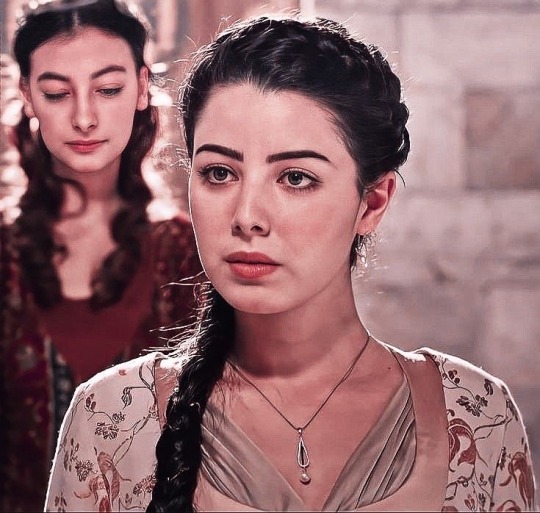

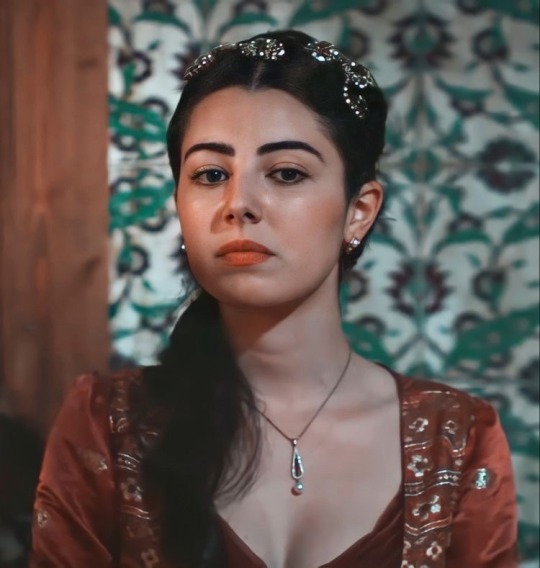


Esmehan Sultan
#esmehan sultan#muhtesem yuzyil#magnificent century#historical ottoman dynasty drama/ottoman dynasty historical princesses
6 notes
·
View notes
Note
How about a Yandere Mehmed (Suleiman's son) in love/obsessed with his brother Mustafa's favorite concubine.
La trajeron de Grecia y ella sabe mucho de artes, literatura y mitos y llama la atención de ambos hermanos ( sería problemático ya que estaban muy "cerca" en el programa )

It's total chaos. I really like this request. I hope you will like it. Please feel free to write more requests.
~ Most likely Mahidevran Sultan or if still alive, Valide Hafsa Sultan chose you. You are always chosen from other women with your beauty and many skills.
~ You are succeeding in being Prince Mustafa's favorite and favorite concubine. He never ceases to invite you to his side. It takes you wherever possible.
~ Maybe you meet Şehzade Mehmed by coincidence or in a place you went with Şehzade Mustafa. He wants to know why you are so important to his brother Mustafa.
~ Researching you causes him to have obsessive feelings towards you. He wishes that you were presented to him.
~ If you have been with his brother, it is not possible for him to take you anymore. However, he will only want to take you if you are a concubine in the harem.
~ Hürrem Sultan soon realizes that there is something strange about his son. He is surprised when he finds out about your reason. If you weren't with Şehzade Mustafa, he would try to recruit you into his son's harem.
~ Hürrem Sultan will take advantage of this situation. He will use you to increase Mehmed's desire to ascend to the throne and to see Mustafa as an enemy.
~ Mahidevran Sultan does not want you to get too close and chat with Hürrem and her children. It warns you to stay away from them.
~ Mahidevran Sultan wants you to get pregnant as soon as possible. If you have children, it will be impossible for you to go or be taken.
~ Mihrimah Sultan will want to spend time with you. Esmehan Sultan (Sahuban Sultan's daughter and because she is in love with Mehmed) will be jealous of you. The other concubines of Şehzade Mehmed are very jealous of you.
~The other concubines of Şehzade Mustafa will be very jealous of you. The fact that you are the prince's favorite makes many concubines angry.
~ When Şehzade Mehmed sees that you and your brother are together, the gets angry and jealous. He promises himself that when he ascends the throne, he will make you his.
~ Şehzade Mustafa is a smart man. Your brother will soon realize that you have feelings for you. She does not hesitate to make her jealous and angry by having happy moments with you in front of her eyes.
#yandere magnificent century#magnificent century#sehzade mustafa#sehzade mustafa x reader#sehzade mehmed#sehzade mehmed x reader#yandere ottoman empire#ottoman empire#yandere sehzade mustafa#yandere sehzade mehmed#yandere concept#concubine reader#sultans
156 notes
·
View notes
Text
Ayşe was born around 1613, she was greek. With permission of Kösem Sultan, Murad IV rewarded her with Haseki Sultan title. In 1633, Murad raises her salary to 2000 aspers a day. The number and identity of her childern has not been confirmed. Angelo Alessandri, a secretary of venetian ambassador wrote about her that she was of Greek origin. According to him, although she was beautiful, she was not as beautiful in spirit as her mother- in law Kösem. Apparently, Ayse was a woman who wasted her money more for greed then generosity. Murad was known for loving Ayşe. He treated her like a queen and she behaved like a queen.Ayşe accompanied Murad IV to Baghdad Campaign. Which was unusal since the incident with Bayezid I amd Olivera Lazarevic when they were captured by Timur. According to austrian historian Joseph von Hammer- Purgstall, Ayşe witnessed the entire campaign.Murad IV passed away in February 1640. We know that Kaya Esmehan's mother came into conflict with Kösem Sultan because Kösem wanted to marry the little girl Kaya to Melek Ahmed Pasha, who was about the same age as Kösem, and she succeeded in doing so. Ayse's salary was cut to just 100 aspers per day. This could just be a coincidence or a hint that Ayse was Kaya's mother. Ayşe passed away in 1679/1680.

youtube

#valide sultan#youtube#ayşesultan#hasekiayşesultan#ottoman history#histoire#history#hasekisultan#sultanmurad#kösemsultan
7 notes
·
View notes
Photo

Family of Murad IV. Its terrible to see how many of his sons just died as infant. Evliya said that all his sons were born with poor health, so I guess it was some kind of genetical disorder, because otherwise we cannot explain the death of this much young baby. Seems like his daughters were not involved as they mostly reached adulthood or at elast died as kids (which was unfortunatelly normal back then). Handan Sultan, Sultan Ahmed I and Murad IV themselves also had poor health and died young, probably Murad inherited it from Handan and Ahmed and for some reason in his case it went through and reached his sons also? I dont know but it is interesting... We know that there are genetical disorders which effect only boys.
#murad iv#ayse sultan#haseki ayse sultan#ayse#ayşe sultan#ayşe#Haseki Ayşe Sultan#Sanavber#sanavber hatun#emirgün#Second haseki#ahmed#hanzade#süleyman#suleiman#hanzade sultan#mehmed#esmehan sultan#esmehan#ismihan#esmehan kaya#kaya#esmehan kaya sultan#kaya sultan#ismihan kaya#ismihan kaya sultan#alaeddin#safiye#safiye sultan#rukiye
32 notes
·
View notes
Text
Esmehan Hanim Sultan

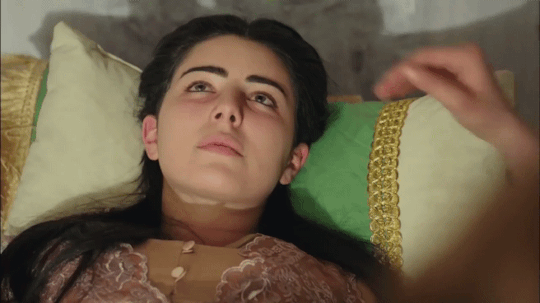

#history#magnificent century#muhteşem yüzyıl#ottoman#sultanas#ottoman sultanas#ottoman valide#ottoman history#valide sultan#esmehan hanim sultan#esmehan sultan#esmahan sultan#hanim sultan
9 notes
·
View notes
Note
Why did they (i don’t know who, but I think all people/her father/her mother) choose esmehan to marry a high rank, Sokollu Mehmed? Why not a Sah (the first daughter of Selim)?
because we don’t actually know the order of birth of Nurbanu’s daughters. Şah, Gevherhan and İsmihan is the order that Peirce gives in The Imperial Harem unfortunately without source (though she has a date for each of them: "Şah Sultan and Gevherhan Sultan were born in 951 (1544/1545), Ismihan Sultan in 952 (1545), and Murad in 953 (1546)."). Kumrular, who writes in 2017, takes this claim as fact in her book about Nurbanu and Safiye (Haremde Taht Kuranlar: Nurbanu ve Safiye Sultan), though she hints at Uluçay's claim that Gevherhan was only "maybe" Nurbanu's daughter, but for some reason dismisses Peirce's claim that Fatma Sultan cannot be Nurbanu's daughter because she was born after she had left Selim's harem to go with Murad. I mean if you cite The Imperial Harem for the first three daughters, you should also talk about Fatma's dubious parentage. This last part kind of troubled me because she clearly states that we don't know in which year Fatma was born but... we do?? It’s 1559?? I always end up confused whenever I read her works.
Anyway, back to your actual question.
It was Süleyman I that decided Şah's, Gevherhan's and İsmihan's husbands in 1562. I guess it was his way to prepare everything in view of Selim's accession. If it's true that only Ismihan is Nurbanu's daughter, as Peirce claims in Empress of the East ("The mother of one, Nurbanu, would go on to become Selim’s favorite consort and mother of his first son, Murad."), then it would explain why she was selected as Sokollu's husband. Ismihan was the full-blooded sister of Selim's heir, after all.
Also, Stephen Gerlach says that Ismihan was "short and ugly, but very smart", which is something quite weird to say as usually everyone calls royals beautiful even if they weren't. The Venetian ambassador Barbaro, for example, said that Ismihan was "young and beautiful". If Gerlach's description is the most faithful one, we can't even say that she was chosen because particularly beautiful.
So, really, there is no answer as to why Ismihan was chosen for Sokollu, arguably the most successful statesman of the three grooms, but it also seems to be a question that no historian has ever posed themselves, so maybe there is no hidden meaning behind it at all.
#anon#ask post#ask: ottoman history#nurbanu sultan#ismihan sultan daughter of selim ii#gevherhan sultan daughter of selim ii#sah sultan daughter of selim ii#Anonymous
12 notes
·
View notes
Text
YURT ÖĞRENCİLERİNE MORAL GECESİ, SINAV ÖNCESİ TÜRKÜLER EŞLİĞİNDE EĞLENDİLER
YURT ÖĞRENCİLERİNE MORAL GECESİ, SINAV ÖNCESİ TÜRKÜLER EŞLİĞİNDE EĞLENDİLER
Esmehan sultan kız öğrenci yurdunda “bizbize moral gecesi“ ne Gençlik ve Spor İl Müdürü Hüssam Olgaç ile yurt hizmetleri müdürü Fırat Akkoyun da katıldı.
Gecede öğrenciler sanatçılar tarafından canlı olarak okunan türküler eşliğinde eğlendi ve sınavlar öncesinde moral depoladı.
Moral gecelerinin her yurtta ayrı ayrı düzenleneceğini belirten Olgaç ;”Biz bize moral geceleri” ini yurtta kalan…
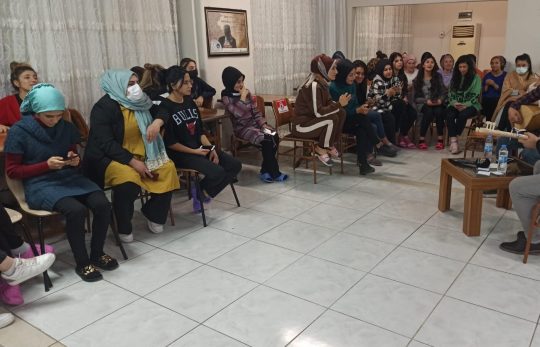
View On WordPress
0 notes
Text
Siirt Devlet (KYK) Öğrenci Yurtları Adres ve Telefonları
Siirt Devlet (KYK) Öğrenci Yurtları Adres ve Telefonları
ESMEHAN SULTAN ÖĞRENCİ YURDU Tipi : Kız Telefon : 04842234020 Faks: 04842234021 Adres : Bahçeli Evler Mah. 1418. Sok. No: 18 İç Kapı No.1 SİİRT SİİRT ERKEK ÖĞRENCİ YURDU Tipi : Erkek Telefon : 0(484) 254-2020 Faks: 04842542021 Adres : Siirt Üniversitesi Kezer Yerleşkesi Veysel Karani Mah. Kurtalan Cad. 36/h Erkek Öğrenci Yurt Müdürlüğü SİİRT HASSA HATUN ÖĞRENCİ…
View On WordPress
0 notes
Photo

Family of Selim II.
#selim ii#sari selim#nurbanu#nurbanu sultan#sah sultan#şah sultan#esmehan sultan#esmehan kaya#sah#şah#gevherhan#gevherhan sultan#Murad III#zal mahmud#köse hüsrev pasha#sokollu mehmed#ibrahim hanzadeler#sokolluzadeler#fatma#fatma sultan#sehzade mehmed#mehmed#süleyman#sehzade süleyman#sehzade abdullah#abdullah#ali#sehzade ali#sehzade osman#osmanlı
39 notes
·
View notes
Text
Portrait of Murad IV's daughters / IV. Murad lányainak portréi
Kaya Esmehan
Kaya was Murad IV’s most famous child, who Evliya said was a lioness, a worthy successor to her father. Evliya knew Sultan Murad well and closely followed Kaya’s life so we can trust him when he talks about Kaya. Based on these, we can assume that Kaya was of a similar nature to her father and grandmother, Kösem.
Kaya was born in Istanbul in 1633, certainly as the daughter Haseki Ayşe Sultan. Her father celebrated her birth with days of celebrations. Kaya's name is particularly interesting, as the name means "stone," and in a more abstract sense, "hard." We don’t know why Murad chose such a name for a newborn baby girl, maybe she was born in good health and looked tough compared to Murad's other children? To offset his peculiar name, Murad gave a much more dynastic name to her also, Esmehan. We don't know much about her childhood.
Kaya first came to the forefront in the 1640s when she was old enough to be married off. The selection of the husband was the responsibility of the Sultan and the mother of the child. The Valide Sultan must have had a word also, but it was not her who decided. We know, for example, that even though Nurbanu wanted to marry one of her granddaughters to a certain man, Safiye (the girl’s mother) prevented this. That is why there was nothing strange about Ayşe choosing a husband for Esmehan Kaya herself. The husband candidate was not particularly politically significant anyway. He was one of Murad's former sword-bearer, to whom Murad himself had promised Kaya before he died. So Kaya herself grew up considering the sword-bearer as her future husband. Kösem, however, did not agree with the decision. She wanted one of her own trusted men to be Kaya’s husband, a pasha who was loyal to her and who she could permanently chain to herself with the marriage. This is how she chose Melek Ahmed Pasha, who was roughly the same age as she was.
So Ayşe and Kösem fought to each other, but it is not known in detail how the war between the two women took place. Some say Ayşe tried to seek the help of Sultan Ibrahim, who, however, wanted to take advantage of the situation and wanted Ayşe for himself. In the end, this did not happen, so Kösem and her chosen one, Melek Ahmed Pasha won. The wedding took place in 1644, however, it wasn't in Kaya's mind to accept the pasha. On the wedding night, she wounded the man with a dagger and forbade him to touch her. Melek Ahmed did not force the matter and accepted Kaya's will. Some say Kösem eventually forced them to consummate the marriage, others said for a while Kösem also accepted Kaya’s decision.
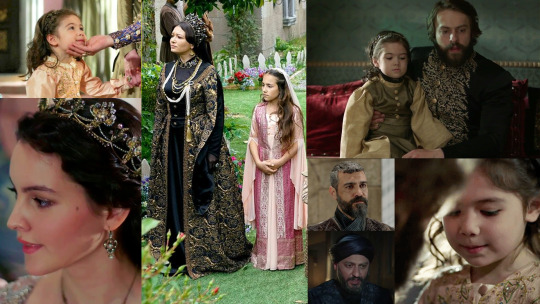
Kaya and Kösem were quite close to each other, she was Kösem's favorite grandchild, and this seriously affected her relationship with Sultan Ibrahim I, who followed her father on the throne and who was in a bad relationship with both Murad IV and Kösem. The new sultan made Kaya's life hell, for example in the late 1640s she was forced to serve his new wife, who was a slave-origin consort. Several contemporary sources report that Ibrahim, since Murad's death, has been constantly disturbing Kaya, and for this reason, Kösem tried to keep the girl away from Ibrahim. Based on this, we can assume that Kaya was relieved when Ibrahim was dethroned and executed. Soon, however, her life turned upside down.
In 1651, seven years after her marriage, Kösem finally forced Kaya to consummate the marriage with her husband. According to Evliya, Kaya did not want it because a future teller predicted that she would die during the birth of her daughter. Kösem wanted Kaya to forget this nonsense, that's why she forced her. Others said there was no compulsion, Kaya herself decided so. Finally, Kaya soon became pregnant and gave birth to her baby daughter, Afife Fatma. Kaya survived the birth, but Kösem could no longer see it, since in September 1651 her rival, the new Sultan Mehmed IV's mother killed her.
Due to her death, Kösem's huge charity did not stop, for Kaya took her place in many ways. She presumably learned charity from her grandmother, as she had a prominent number and size of foundations and regularly helped those in need with huge sums of money. Just as she was a worthy daughter of Murad, she was a worthy grandchild of Kösem. As the common charity also suggests, Kösem was close to Kaya and knew her quite well. Maybe that’s certainly why she chose Melek Ahmed as her husband. Besides her own political ambitions, she might have guessed that Melek Ahmed could be a good husband for Kaya. Eventually, her suspicion came true because a real love came out from the marriage of Melek Ahmed and Kaya. Melek Ahmed regularly piled up gifts for his sweetheart, and Kaya helped the pasha move forward in political fields. Kaya once set off while was heavily pregnant to warn her husband that someone wanted to assassinate him.
In such a loving and caring relationship, it’s no surprise that after her first successful birth, Kaya soon became pregnant again. Perhaps after the success of her first birth, she could have calmed down and thought the prophecy was wrong. However, this birth was no longer as easy as the birth of Afife. She was seven months pregnant when labor began and she gave birth to a premature baby. The child was named Ahmed but he died on the day he was born. Kaya survived childbirth and soon recovered.
Then in 1658 Kaya became pregnant again. This time, during her pregnancy, she had a strange dream that suggested that she would soon join to her grandfather, Ahmed I, and his brother, Mustafa I. Kaya’s labor soon began, and she gave birth to a girl after a long, difficult labor, however, the placenta did not leave her uterus after the child was born. Because of this, the midwives tried every existing method to remove the placenta from the sultana’s body. At first, they gave her herbs to drink, then some herbs were put into her uterus with water, to clean the placenta away. But when none of it worked, the midwives tried to pull out the placenta with their bare hands. Eventually, after four-day torture, Kaya died in her palace and her little daughter soon followed her.
Kaya was buried in the mausoleum of Ibrahim I at Mehmed IV's command. The place of the burial suggests that Mehmed and Kaya were not close to each other at all, since if Mehmed had been the least interested in the matter, he would certainly not bury Kaya next to Ibrahim, with whom they knowingly hated each other. It cannot be ruled out that after the assassination of Kösem, Kaya violated the Sultan or his mother in some way and that was the background of their relationship. During the funeral, Melek Ahmed Pasha fell to Kaya's coffin, crying loud and was unable to calm down. This kind of emotional outburst was very unusual for a guy and very not okay with the traditions. Melek Ahmed mourned his beloved wife for the rest of his life, even if he was forced to remarry over time.
As Kaya followed Kösem in charity, so did her daughter, Afife followed her. With the death of her mother, Afife took over the supervision of all her foundations as soon as she became old enough to do so. Like her mother and grandmother, she was a really charitable and generous person. She was married to a pasha named Suleiman, who already had two sons from his previous marriage. They had no children together with Afife. Afife Fatma Hanimsultan died in 1727 and was buried in the Şehzade Mosque Complex.

Safiye
The identity of her mother and date of birth are unknown, all that is known is that she was born after 1633. Her name is interesting, since Safiye, although occurring among dynastic names, was not common. In addition, Safiye Sultan, Murad IV’s great-grandmother, was not very popular in the period. First of all, it would be nice to know who named the little princess. As the exact date of birth is not known, this is difficult to say. If she was born during any of Murad's campaigns, she would certainly be named by Kösem. The name may suggest that perhaps Murad or Kösem liked or revered the famous sultana. We know that Kösem often visited Safiye during the reign of Ahmed I, perhaps she also took Murad with her on these journeys, so he had the opportunity to establish some kind of relationship with his great-grandmother.
She was married off by her cousin Mehmed IV in 1659 to the blonde Abaza Hüseyin Pasha, who was a relative of the reigning Grand Vizier Köprülü Mehmed Pasha. We don’t know much about their marriage, however, the fact that they had four children may indicate that their relationship was balanced. One son Ebu-Bekr died as a child and another son Sultanzade Mehmed Remzi Pasha (1660-1719) became an influential statesman. Mehmed Remzi Pasha was married and the Safiye Sultanzadelers can be traced back to him. The Safiye Sultanzadelers have been present in Ottoman history for centuries, and are mentioned by many even in the twentieth century, and perhaps some of them still live among us today. Along with two sons, Safiye and Abaza Hüseyin Pasha also had a daughter, Rukiye (before 1680 - 1697), who reached adulthood and was married to Murmedoglu Gürci Mehmed Pasha in 1694, but we know no more about her, as she soon died.
Safiye died in 1680 when she gave birth to her last child a premature baby. Along with Safiye, her son Abdullah also died. She was buried in the mausoleum of her grandfather, Ahmed I, along with her son. Her husband survived her for eight years.

Rukiye
Rukiye was probably born in the last years of Murad IV's reign, perhaps in 1640. The identity of her mother is unknown. She was also married off by her cousin, Mehmed IV, to Şeytan Melek Divrikli Ibrahim Pasha in January 1663, with whom she had two children, Ayşe (? -1717) and Fatma (? -1727?). The date of birth of the girls is unknown, usually, they put it by the late 1670s, but it is more likely that they were born much earlier, shortly after the wedding of Rukiye and the pasha. We know a little more about Fatma's life than we know about Ayşe. Fatma's husband was Mısırlı Bıyıklı Mehmed Pasha, from whom a son was born, Mehmed Said.
Rukiye's husband died in 1685, but the widowed sultana probably married again soon. Although historians disagree on this, if she did remarry, Gürcü Mehmed Pasha was the chosen one. Similarly uncertain is the time of Rukiye's death, all we know is that it may have happened sometime between 1690 and 1703 and that she was buried in the Şehzade Mosque complex.

More daughters
Hanzade was born in 1631, but the identity of her mother is unknown. Her husband was Nakkaş Mustafa Pasha until the man's death in 1657. Their marriage remained childless and she did not remarry after widowhood. She died in 1675.
The identity and date of birth of Ayşe's mother are also unknown. Before 1655 he married Malatuk Süleyman Pasha but we don't know any more about her.
An anonymous sultana, who was born in 1627, married Tüccarzade Mustafa Pasha in 1640.
Another anonymous sultana married Ammarzade Mehmed Pasha before 1648, but we know nothing else about her.
In addition to the former girls, Murad had other daughters who died as children, such as Hafsa, of whom we know nothing, and Esmehan, who was born before 1633 and, according to some, died as an infant, before 1633. But since she was buried in the mausoleum of Mustafa I, it arises that she died after Mustafa's death in 1639. It wouldn't be logical to rebury her in Mustafa's tomb while all of Murad's other children are buried where they were originally buried. Some say Murad also had a daughter named Gevherhan, while others think she was Ibrahim's daughter, anyhow she died as a child.
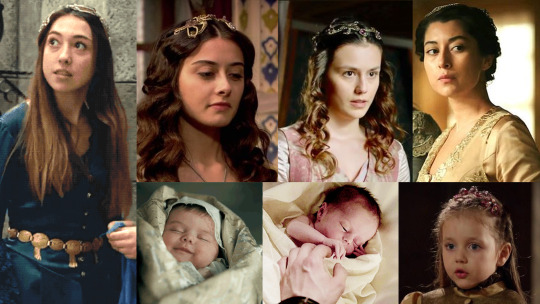
Used sources: L. Peirce - The Imperial Harem; N. Sakaoğlu - Bu Mülkün Kadın Sultanları; R. Dankoff - The Intimate Life of an Ottoman Statesman; R. Dankoff - An Ottoman Mentality: The World of Evliya Çelebi; Du Loir - Les voyages du sieur Du Loir; Y. Öztuna - Sultan Genç Osman ve Sultan IV. Murad; J. Dumas - Les perles de nacre du sultanat: Les princesses ottomanes; C. Finkel - Osman's Dream: The Story of the Ottoman Empire; Y. Öztuna - Devletler ve Hanedanlar; Uluçay - Padişahların Kadınları ve Kızları; F. Davis - The Palace of Topkapi in Istanbul; G. Junne - The black eunuchs of the Ottoman Empire
* * *
Kaya Esmehan
Kaya volt IV. Murad leghíresebb gyermeke, aki Evliya szerint egy igazi oroszlán volt, méltó utódja apjának. Evliya jól ismerte Murad szultánt és alaposan nyomon követte Kaya életútját, így hihetünk neki, mikor Kayáról beszél. Ezek alapján azt sejthetjük, hogy Kaya hasonló természetű volt, mint apja és nagyanyja, Köszem.
Kaya 1633-ban született Isztambulban, minden bizonnyal Haszeki Ayşe szultána lányaként. Születését apja napokon át tartó mulatsággal ünnepelte meg. Kaya neve különösen érdekes, hiszen a név jelentése "kő", elvontabb értelemben pedig "kemény". Nem tudjuk, hogy Murad miért választott ilyen nevet egy újszülött kislánynak, talán többi gyermekéhez képest jó egészségben született és keménynek tűnt? Hogy különös nevét ellensúlyozza Murad egy sokkal dinasztikusabb nevet, az Esmehant is a Kaya mellé tette. Gyermekkoráról nem sokat tudunk.
Kaya először az 1640-es években került a figyelem középpontjába, mikor elég idős lett a kiházasításhoz. A férj kiválasztása a mindenkori szultán és a gyermek édesanyjának feladata volt. A Valide szultánának minden bizonnyal szintén lehetett szava, ám nem ő döntött. Tudjuk például, hogy Nurbanu hiába szerette volna egyik unokáját egy bizonyos férfihoz adni feleségül, Safiye (a lány anyja) ezt megakadályozta. Épp ezért nem volt abban semmi furcsa, hogy Ayşe maga válasszon férjet Esmehan Kaya számára. A férjjelölt egyébként nem volt különösen jelentős politikai szempontból. Murad egyik korábbi fegyverhordozója volt, akinek még maga Murad ígérte oda Kayát, mielőtt meghalt volna. Kaya maga úgy nőtt fel tehát, hogy a fegyverhordozót tekintette jövendőbeli férjének. Köszem azonban nem értett egyet a döntéssel. Saját emberei közül akart valakit Kaya férjéül, egy olyan pasát, aki hűséges hozzá és akit végleg magához láncolhat a házassággal. Így esett a választása a nagyjából vele egy idős Melek Ahmed Pasára.
Ayşe és Köszem egymásnak feszültek tehát, de nem tudni részletekbe menően, hogyan zajlott a két nő közötti háború. Egyesek szerint Ayşe igyekezett Ibrahim szultán segítségét kérni, aki azonban ki akarta használni a helyzetet és magának akarta Ayşét. Végül ez nem történt meg, így győzött Köszem és a választottja Melek Ahmed Pasa. Az esküvőre 1644-ben került sor. Kayának esze ágában sem volt azonban elfogadni a pasát. A nászéjszakán egy tőrrel sebesítette meg a férfit és megtiltotta neki, hogy hozzáérjen. Melek Ahmed nem forszírozta a dolgot és elfogadta Kaya akaratát. Egyesek szerint Köszem végül erőszakkal rávette őket, hogy elhálják a nászt, mások szerint egy időre Köszem is elfogadta Kaya döntését.

Kaya és Köszem meglehetősen közel álltak egymáshoz, ő volt Köszem kedvenc unokája, ez pedig komolyan befolyásolta viszonyát az apja után trónrakerülő I. Ibrahimmal. Az új szultán pokollá tette Kaya életét, az 1640-es évek végén például arra kényszerítette, hogy feleségét szolgálja. Több korabeli forrás is beszámol arról, hogy Ibrahim, Murad halála óta folyamatosan kipécézte magának Kayát és emiatt Köszem igyekezett a lányt távol tartani Ibrahimtól. Ez alapján feltételezhetjük, hogy Kaya megkönnyebbült, mikor Ibrahimot trónfosztották és kivégezték. Hamarosan azonban élete fenekestül felfordult.
1651-ben, hét évvel házassága megköttetése után Köszem szultána végül kényszerítette Kayát, hogy elhálja a nászt férjével. Evliya szerint Kaya azért nem akarta elhálni a nászt a pasával, mert egy álomfejtő (vagy jövendő mondó) azt jósolta neki, hogy lánya születésébe fog belehalni. Köszem a kényszerítéssel azt akarta elérni, hogy Kaya elfelejtse ezt a nonszensz gondolatot. Mások szerint nem volt semmi kényszer, Kaya maga döntött így. Végül aztán Kaya hamarosan teherbe esett és világra hozta kislányát, Afife Fatmát. Kaya túlélte a szülést, Köszem azonban ezt már nem láthatta, hiszen 1651 szeptemberében vetélytársa, az új szultán IV. Mehmed anyja meggyilkoltatta.
Köszem halálával nem szűnt meg hatalmas jótékonykodása, Kaya ugyanis sok szempontból átvette a helyét. Feltehetőleg nagyanyjától tanulta a jótékonykodást, ugyanis kiemelt számú és méretű alapítványa volt és rendszeresen segítette a szükségben szenvedőket hatalmas összegekkel. Mint ahogy méltó lánya volt Muradnak, úgy méltó unokája Köszemnek. Mint a közös jótékonykodás is sugallja, Köszem meglehetősen jól ismerte unokáját, és minden bizonnyal épp emiatt választotta számára Melek Ahmedet férjül. Saját politikai ambíciói mellett úgy sejthette, Melek Ahmed jó férje lehet Kayának. Végül sejtelme beigazolódott, mert Melek Ahmed és Kaya között valódi szerelem és bajtársiasság szövődött. Melek Ahmed rendszeresen halmozta el ajándékokkal kedvesét, Kaya pedig minden módon segítette a pasa előremenetelét. Kaya egyszer mindenórás terhesen indult útnak, hogy figyelmeztesse férjét, hogy valaki az életére akar törni.
Egy ilyen szerelemre és bizalomra épülő kapcsolatban nem meglepő, hogy az első sikeres szülés után Kaya hamarosan újra várandós lett. Talán az első szülés sikere után megnyugodhatott és azt hihetette a prófécia téves volt. Ez a szülés azonban már korántsem volt olyan felhőtlen, mint Afife születése. Hét hónapos terhes volt, amikor beindult a szülés és egy koraszülött fiút hozott világra. A gyermeket Ahmednek nevezték el, ám még születése napján meghalt. Kaya túlélte a szülést és hamarosan felépült.
1658-ban aztán Kaya újra várandós lett. Ezúttal terhessége alatt különös álmot látott, mely azt sugallta hogy hamarosan csatlakozni fog nagyapjához I. Ahmedhez és annak öccséhez, I. Musztafához. Kaya szülése hamarosan beindult és hosszadalmas, nehéz szülés után egy kislánynak adott életet, azonban a méhlepény nem távozott a gyermek születését követően. Emiatt a bábák minden létező módszert megpróbáltak, hogy eltávolítsák a méhlepényt a szultána testéből. Eleinte gyógyfőzeteket itattak vele, aztán a gyógyfőzeteket a méhébe juttatták, de amikor ez sem járt eredménnyel puszta kezükkel próbálták kihúzni a méhlepényt. Végül négy napos tortúra után Kaya meghalt, kislánya pedig hamarosan követte őt.
Kayát IV. Mehmed parancsára I. Ibrahim mauzóleumába temették el. A temetés helye sugallja, hogy Mehmed és Kaya egyáltalán nem álltak egymáshoz közel, hiszen ha Mehmedet a legkevésbé is érdekelte volna a dolog, Kayát biztosan nem Ibrahim mellé temeti, akivel tudottan gyűlölték egymást. Nem zárható ki, hogy Köszem meggyilkolása után Kaya valamilyen módon megsértette a szultánt vagy annak édesanyját és ez állt viszonyuk hátterében. A temetés alatt Melek Ahmed Pasa a szokásokat megsértve zokogva borult Kaya koporsójára és képtelen volt megnyugodtni. Az ilyesfajta érezelmi kitörés nagyon nem volt szokás egy pasától. Melek Ahmed élete végéig gyászolta szeretett feleségét még akkor is ha idővel kényszerítették az újra nősülésre.
Ahogy Kaya Köszem örökébe lépett, úgy lépett lánya Afife Kaya örökébe. Anyja halálával ő vette át minden alapítványának felügyeletét, amint elég idős lett ehhez. Anyjához és nagyanyjához hasonlóan igazán jótékony személy volt. Egy Szulejmán nevű pasához adták feleségül, akinek már volt két fia előző házasságából, Afifével nem született közös gyermekük. Afife Fatma Hanimszultána 1727-ben halt meg és a Şehzade mecsetkomplexumban temették el.

Safiye
Safiye szultána édesanyjának kiléte és születési ideje nem ismert, annyit tudni, hogy 1633 után jött világra. Neve érdekes, hiszen a Safiye bár előfordult a dinasztikus nevek között, nem volt gyakori. Emellett Safiye szultána, Murad dédnagyanyja nem volt túl népszerű a korszakban. Először is jó lenne tudni, hogy ki nevezte el a kishercegnőt. Mivel pontos születési ideje nem ismert, ezt nehéz megmondani. Ha Murad valamelyik hadjárata alatt jött világra, minden bizonnyal Köszem nevezte el. Az elnevezés utalhat arra, hogy talán Murad vagy Köszem kedvelte és tisztelte a híres szultánát. Azt tudjuk, hogy Köszem gyakran látogatta Safiyét még I. Ahmed uralkodása alatt, talán ezen utakra Muradot is magával vitte, így annak lehetősége volt valamilyen viszonyt kialakítani dédnagyanyjával.
Unokatestvére, IV. Mehmed házasította ki 1659-ben a szőke Abaza Hüseyin Pasához, aki szegről végről a nagyvezír Köprülü Mehmed Pasa rokona volt. Házasságukról nem sokat tudunk, azonban az, hogy négy gyermekük is született arra utalhat, hogy kiegyensúlyozott volt a kapcsolatuk. Egyik fiuk Ebu-Bekr gyermekként elhunyt, másik fiuk Sultanzade Mehmed Remzi Pasa (1660-1719) pedig befolyásos államférfi lett. Mehmed Remzi Pasa megházasodott és tőle eredeztethetőek a Safiye Sultanzadelerek, akiknek családja évszázodik jelen volt az Oszmán történelemben, a huszazdik században is többen említést tesznek róluk és talán ma is köztünk élnek. Safiyének és Abaza Hüseyin Pasának két fiuk mellett született egy lányuk is Rukiye (1680 előtt - 1697), aki megérte a felnőttkort és 1694-ben kiházasították Muruloglu Gürci Mehmed Pasához, többet azonban nem tudunk róla, mivel hamarosan meghalt.
Safiye 1680-ban hunyt el, amikor utolsó gyermekét hozta világra koraszülöttként. Safiyével együtt a fia, Abdullah is meghalt. Nagyapja, I. Ahmed mauzóleumában temették el fiával együtt. Férje nyolc évvel élte túl.

Rukiye
Rukiye valószínűleg Murad utolsó éveiben született, talán 1640-ben. Édesanyja kiléte nem ismert. Őt is unokaöccse IV. Mehmed házasította ki 1663 januárjában Şeytan Melek Divrikli Ibrahim Pasához, akivel két gyermeke született, Ayşe (?-1717) és Fatma (?-1727?). A lányok születési ideje nem ismert, általában az 1670-es évek végére teszik, ám valószínűbb, hogy jóval hamarabb, az esküvő után nemsokkal születtek. Fatma életéről valamivel többet tudunk, mint Ayşéről. Fatma férje Mısırlı Bıyıklı Mehmed Pasa volt, akitől egy fia született Mehmed Said.
Rukiye férje 1685-ben meghalt, az özvegy szultána valószínűleg azonban hamarosan újra férjhez ment. A történészek bár nem egyeznek ebben, ha mégis újra férjhez ment, akkor Gürcü Mehmed Pasa volt a kiválasztott. Hasonlóan bizonytalan Rukiye halálának ideje, annyit tudunk, hogy 1690 és 1703 között valamikor történhetett és hogy a Şehzade mecset komplexumban temették el.

További lányai
Hanzade 1631-ben jött világra, édesanyjának személye azonban nem ismert. Férje Nakkaş Mustafa Pasa volt, egészen a férfi 1657-es haláláig. Házasságuk gyermektelen maradt és Hanzade megözvegyülése után sem ment újra férjhez. 1675-ben halt meg.
Ayşe édesanyjának kiléte és születési ideje sem ismert. 1655 előtt ment férjhez Malatuk Süleyman Pasához.
Egy névtelen szultána, aki 1627-ben született 1640-ben ment férjhez Tüccarzade Mustafa Pasához.
Egy másik névtelen szultána Ammarzade Mehmed Pasa felesége lett 1648 előtt, de nem tudunk semmi mást róla.
Az előbbi lányok mellett Muradnak voltak további lányai, akik gyermekkorukban haltak meg, így például Hafsa, akiről semmit sem tudunk és Esmehan, aki 1633 előtt született és egyesek szerint csecsemőként meg is halt. Ám mivel I. Musztafa mauzóleumában helyezték örök nyugalomra felmerül, hogy Musztafa 1639-es halálát követően halt meg ő is. Nem lett volna ugyanis logikus a lányt újratemetni Musztafa mauzóleumában, hiszen Murad többi gyermekét sem temették soha újra. Mind ott nyugszanak, ahová eredtileg temették őket. Egyesek szerint Muradnak volt egy Gevherhan nevű lánya is, mások szerint ez a gyermek Ibrahimé volt, akárhogy is a kislány gyermekkorában meghalt.

Felhasznált források: L. Peirce - The Imperial Harem; N. Sakaoğlu - Bu Mülkün Kadın Sultanları; R. Dankoff - The Intimate Life of an Ottoman Statesman; R. Dankoff - An Ottoman Mentality: The World of Evliya Çelebi; Du Loir - Les voyages du sieur Du Loir; Y. Öztuna - Sultan Genç Osman ve Sultan IV. Murad; J. Dumas - Les perles de nacre du sultanat: Les princesses ottomanes; C. Finkel - Osman's Dream: The Story of the Ottoman Empire; Y. Öztuna - Devletler ve Hanedanlar; Uluçay - Padişahların Kadınları ve Kızları; F. Davis - The Palace of Topkapi in Istanbul; G. Junne - The black eunuchs of the Ottoman Empire
#Murad IV#rukiye sultan#esmehan kaya#esmehan sultan#Kösem sultan#mahpeyker kösem#ayşe haseki#haseki ayşe#melek ahmed#hanzade sultan#safiye sultan#Mehmed IV#Turhan Hatice Sultan#ibrahim I
44 notes
·
View notes
Photo

As I already uploaded every portrait of Selim II’s family, here is their family tree!
Mivel II. Szelim családjából mindenki portréját feltöltöttem már, itt a családfájuk!
#family tree#Selim II#Nurbanu Sultan#sokollu mehmed#Murad III#zal mahmud#gevherhan sultan#esmehan sultan#sah sultan#fatma sultan
13 notes
·
View notes
Text

"I just want them to know
That I gave my everything
I did my best
I brought someone to happiness
It made this world a little better
Just because
I was here"
(I Was Here - Beyoncé)
#halime hatun#ayse sultan#mahfiruze hatun#meleksima hatun#esmehan hanim sultan#mahidevran hatun#hatice sultan#sah sultan#fatma sultan#sultanate of women#history#magnificent century#muhteşem yüzyıl#ottoman#sultanas#ottoman sultanas#ottoman valide#ottoman history#muhteşem yüzyıl kösem
20 notes
·
View notes
Text
Portrait of Murad IV's consorts / IV. Murad ágyasainak portréi
Haseki Ayşe Sultan
The Haseki
Ayşe Sultan was Murad’s favorite, dominating his reign throughout. Ayşe may have been roughly the same age as Murad, born around 1612. We know that her origin was Greek, for the ambassadors often likened her to her Greek mother-in-law, Kösem Sultan. Ayşe appears in harem records from 1628, so presumably, it was at this time that she became Murad's concubine. Unfortunately, we do not know who Ayşe’s children were and how many children she had, her only known daughter was Esmehan Kaya, who was born in 1633.
We do not know exactly when Ayşe became Haseki Sultan, but we can assume the date 1632. For from this year we have an ambassador report according to which Murad asked his mother for approval to raise the mother of his most recently born daughter to the Haseki rank. Unfortunately, we do not know which girl was born in 1632. Hanzade was born in 1631 or 1632, and a girl named Esmehan was born and die surely before 1633, but we do not know who was the mother of these sultanas. It is also possible that we erroneously postpone the birth of Esmehan Kaya to 1633. However, since Ayşe held the rank of Haseki and dominated throughout Murad's reign, we can assume that she had several children in addition to Kaya, especially boys. So it is simply possible that she gave birth to a child in 1632.
Not much of Ayşe's personality is known. In 1637, the Venetian ambassadors' secretary Angelo Alessandrini spoke of Ayşe as a woman of outstanding beauty, but in spirit, she was not in the least like the Valide Sultan, Kösem. Nonetheless, according to Alessandrini, the sultan holds her in high esteem and treats her like a queen, and Ayşe also strives to behave like a real queen. However, according to the secretary, she has no chance and in vain she tries to imitate the Valide Sultan in her clothes, jewelry, and number of servants, she can never reach her. Alessandrini reveals a lot about Ayşe with this short description, but it is important to keep in mind that Alessandrini and the ambassador he worked with were extremely loyal admirers of the great Valide Sultan, Kösem, so it is not surprising that no one could reach her in their opinions.
The strong bond between Ayşe and Murad is well exemplified by the fact that Murad took Ayşe with him on his campaign of Yerevan. This was exceptional, for the sultans had not taken their wives and favorite concubines with them for centuries. Bayezid I and his wife fell into the captivity of Timur Lenk together and, according to legend, Bayezid was tortured by Timur with raping and humiliating his wife in front of Bayezid. There is also a known case from Selim I's time when, during a campaign against the Safavids, Selim captured one of the shah's favorite concubines (or his wife), who he then married to an unimportant Ottoman official. Aware of such risks, most sultans did not take their wives with them. Some believe that Ayşe gave birth to a son named Aleaddin during this campaign, but this is probably the result of a misunderstood. Prince Aleaddin was indeed born in 1635 during the campaign, but he was born in Istanbul, so Ayşe, who was on the campaign, could hardly have been his mother, and Murad could hardly have allowed his pregnant concubine to accompany him to the campaign.
Perhaps precisely because Ayşe was with Murad throughout the campaign, many blame Ayşe for the execution of Murad’s younger brothers. After returning from the campaign, Murad killed his two half-brothers, Bayezid and Suleiman. However, there is no evidence that Ayşe ever tried to turn Murad against the princes. After the campaign, several eyewitnesses described Ayşe’s return to Istanbul as a very magnificent event. For Ayşe, this was probably one of the last magnificent moments, as soon Murad's health deteriorated, his sons died and a new concubine emerged, whom Murad also raised to the rank of Haseki and who was paid a higher salary than Ayşe.

The Widow Sultana
After the death of Murad in 1640, she moved to the Old Palace with the other concubines of Murad and with her child or children. Her relationship with Kösem Sultan was probably never very good and close, but it soon reached a low point. Esmehan Kaya entered an age to be slowly married off in the mid-1640s. The selection of the husband was the responsibility of the Sultan and the mother of the child. The Valide also had a word but she was not the one to decide. We know, for example, that even though Nurbanu wanted to marry one of her grandchildren to a certain man, Safiye (the girl’s mother) prevented this. That is why there was nothing strange about Ayşe choosing a husband for Esmehan Kaya herself. The husband candidate was not particularly politically significant anyway. He was one of Murad's former swordbearers, to whom Murad himself promised Kaya before he died. Kösem, however, wanted one of her own trusted men to be Kaya’s husband, a pasha who was loyal to her already and who she could permanently chain to herself with marriage.
So Ayşe and Kösem were tense to each other, but it is not known in detail how the war between the two women took place. Some say Ayşe tried to seek the help of Sultan Ibrahim, who, however, wanted to take advantage of the situation and wanted Ayşe for himself. In the end, this did not happen, so Kösem and her chosen one, Melek Ahmed Pasha won. Kaya and Kösem were close to each other, she was Kösem's favorite grandchild, this is why it is strange that Kösem forced her to marry Melek Ahmed despite Kaya's own will. The fact that Kösem forced Kaya, a barely 13-year-old girl, to consummate the marriage with a pasha (who in age was like Kaya's own grandfather) complicating matters further. It was especially extreme because Kaya threatened the pasha with a dagger to leave her alone and the pasha accepted this. So both of the parties were totally fine with it, but Kösem still did not let it happen. Maybe Kösem thought that without consummating the marriage Ayşe could have tried to invalidate it.
Perhaps the former events also are related to the fact that instead of Ayşe's previous high salary (2000 aspers per day), in the Old Palace she received only 100-200 aspers per day for the rest of her life, regardless of whether Valide and Haseki Sultanas could keep their original salaries even in the Old Palace. Ayşe disappears from the harem records in 1680, suggesting that she died in either 1679 or 1680. During her relatively long life, she could see the reign of three sultans, reached heaven as Murad’s favorite, and reached hell as a mother. In addition to Esmehan Kaya, she certainly had sons and perhaps other daughters who all died as children. Her only child who reached adulthood, Esmehan Kaya, also died before Ayşe in 1658.

The second Haseki Sultan
Not much is known about her, her name, origin, the identity of her children are all obscured. All we know is that after Murad’s campaign in Yerevan, she was elevated to the rank of Haseki, certainly because she gave birth to a son. Maybe she was the mother of Prince Aleaddin, but more likely she had given birth to her child later, perhaps she was the mother of a prince who was born in 1638, perhaps of another unknown child. The second Haseki started her career with a daily salary of 2571 aspers, which was higher than the salary of Ayşe with 2000 aspers. We do not know the reason for this, but barely seven months later Murad also reduced her salary to 2,000 aspers. Perhaps the reason for the extremely high salary could have been that she became pregnant (or gave birth to a son) when all of Murad's sons died and by the time Prince Kasim (his brother) had already been executed? A heir was more urgent at this time than ever before, so it makes sense for Murad to give the concubine an outstanding allowance for the news of pregnancy or childbirth. Then, seven months later, when the Haseki lost her child or gave birth to a daughter, Murad reduced her salary to the level of Ayşe's, who also lost her sons.
Regarding her origin, the possibility arises that she was Sicilian. Jean-Baptiste Tavernier reports that Murad spent a particularly large amount of time in the Yerevan Pavilion with a Sicilian woman who he loved very much and who, in addition to her beautiful appearance, was a truly generous creature, so Murad never denied anything from her. According to Tavernier, she was a Sicilian noblewoman who was captured at sea and then gifted to the Sultan by Algir's beylerbey. Maybe the story is true, maybe not. Maybe it's about the second Haseki, maybe someone else.
With Murad’s death, the second Haseki disappears from the harem records forever, for which there are only two explanations (especially knowing that Ayşe appears precisely in the same register until her own death). The second Haseki maybe died shortly before Murad or was married off. The latter would not be unusual, since the widows of the sultans were often married off if they were childless or only had daughters. Since it is quite probable that the second Haseki lost her child, it was a logical solution to marry her off. Since she did not live in the harem anymore and is not on the registers, we do not know when she died.

Sanavber Hatun
Sanavber was a member of Murad's harem, of whom we know that she had a foundation which she established in 1628. The date of 1628 makes it probable that Sanavber may not have been Murad's concubine as Murad’s first child was born in 1627, so while it is possible for his mother to be Sanavber, it is unlikely that a young and inexperienced mother around the age of 15 would be allowed (and has the money) to establish a foundation. It is more likely that Sanavber was a high-ranking harem servant who owed her privileged status to either Murad or to Kösem Sultan. What makes her particularly interesting is that the documents of her foundation refer to her as “Sanavber bint Abdülmennan,” which is not the usual reference to converted slaves but a reference to a Muslim woman. Sanavber, then, may have been a high-ranking, free Muslim woman who perhaps belonged to Murad’s harem as a poet or associate, such as Hubbi Hatun was in the harem Selim II and Murad III?

Emirgün's sister
According to some, when Emirgün surrendered and handed over the castle of Yerevan to Sultan Murad in 1635, he presented his sister to the sultan. Legend has it that the woman was so beautiful that all of Murad's concubines faded beside her. Others say Murad never made Emirgün's sister his concubine, but there are also those who say Emirgün never gave his sister to Murad. Either way, the woman never entered Murad’s Istanbul harem.
Rosana
Rosana is probably a legend rather than Murad’s real concubine. Legend has it that Rosana was tall, blonde, and very light-skinned, but very bad in personality, so much so that Murad was afraid of her. Rosana was jealous of everything and everyone, hating Murad's other consorts, his younger brothers. Some go so far that it was Rosana, who executed the sultan's younger brothers on behalf of Murad. When one of Murad’s sisters realized this, she accused Rosana, but Murad didn’t believe her sister and became so angry that he killed her with a hammer. Finally, Kösem proved that Rosana was the murderer of the princes, by the time Murad himself stabbed the woman with a dagger, but the sultan never loved another woman later. I think it’s clear to everyone that this is more of a fairy tale than a real story. Never does a harem register or any ambassador from the period mention Rosana.

Used sources: C. Finkel - Osman's Dream: The Story of the Ottoman Empire; L. Peirce - The imperial harem; G. Piterberg - An Ottoman Tragedy, History and Historiography at Play; Öztuna - Devletler ve Hanedanlar; Uluçay - Padişahların Kadınları ve Kızları; F. Davis - The Palace of Topkapi in Istanbul; Y. Öztuna - Genç Osman ve IV. Murad; G. Junne - The black eunuchs of the Ottoman Empire; R. Dankoff - An Ottoman Mentality: The World of Evliya Çelebi; R. Murphey - ‘The Functioning of the Ottoman Army under Murad IV (1623–1639/1032–1049):Key to Understanding of the Relationship Between Center and Periphery
* * *
Haseki Ayşe Sultan
A Haszeki
Ayşe szultána volt Murad kedvence, aki uralkodását végig dominálta. Ayşe valószínűleg Muraddal nagyjából egy idős lehetett, 1612 körül születhetett. Származását tekintve tudjuk, hogy görög volt, ugyanis a követek gyakran hasonlították szintén görög anyósához, Köszem szultánához. Ayşe 1628-tól tűnik fel a háremjegyzőkönyvekben, így feltehetőleg nagyjából ekkor lett Murad ágyasa. Sajnos nem tudjuk, hogy kik voltak Ayşe gyermekei és hogy hány gyermeke volt, egyetlen ismert lánya Esmehan Kaya, aki 1633-ban született.
Nem pontosan tudjuk, hogy Ayşe mikor lett Haszeki szultána, azonban feltételezhetjük az 1632-es dátumot. Ugyanis ebből az évből maradt ránk egy követi beszámoló, mely szerint Murad anyja jóváhagyását kérte, hogy Haszeki rangra emelje (vagy feleségül vegye) legújabban született lányának anyját. Sajnos nem áll rendelekzésünkre, hogy melyik lány született 1632-ben. Hanzade 1631-ben vagy 1632-ben született, egy Esmehan nevű lány pedig tudottan 1633 előtt, ám nem tudjuk ki volt ezen szultánák édesanyja. Az is lehet, hogy Esmehan Kaya születését tesszük tévesen 1633-ra. Mivel azonban Ayşe a Haszeki rangot viselte és Murad uralma alatt végig dominált, feltételezhetjük, hogy több gyermeke volt Kaya mellett, különös tekintettel fiúkra is.
Ayşe személyiségéről nem sok maradt fenn. Angelo Alessandrini velencei titkár 1637-ben úgy beszélt Ayşéről, mint kiemelkedő szépségű nőről, aki azonban lélekben a legkevésbé sem olyan, mint a Valide szultána, Köszem. Ettől függetlenül Alessandrini szerint a szultán nagy becsben tartja és királynőként bánik vele, Ayşe pedig igyekszik úgy is viselkedni, mint egy valódi királynő. Erre azonban a titkár szerint esélye sincs és hiába próbálja ruháiban, ékszereiben és szolgálói számában is utánozni a Valide szultánát, sosem érhet fel hozzá. Alessandrini ezzel a rövid leírással is sokat elárul Ayşéról, azonban fontos észben tartanunk, hogy Alessandirini és a követ, akinek dolgozott, Köszem végletekig hűséges csodálói voltak, így nem meglepő, ha számukra senki nem érhetett fel a nagy Valide szultánához.
Az Ayşe és Murad között lévő erős köteléket jól példázza, hogy Murad magával vitte Ayşét yerevani hadjáratára is. Ez kivételes volt, ugyanis a szultánok évszázadok óta nem vitték magukkal feleségeiket és kedvenc ágyasaikat a hadjáratokra. I. Bayezid és felesége ugyanis együtt estek Timur Lenk fogságába és a legendák szerint Bayezidet úgy kínozta Timur, hogy feleségét gyalázta és alázta meg előtte. Emellett I. Szelim idejéből is ismert egy eset, mikor egy szafavidák elleni hadjárat során Szelim fogjul ejtette a sah egyik kedvenc ágyasát (vagy feleségét), akit aztán rangol alul házasított ki egy oszmán tisztviselőhöz. Ilyen kockázatok ismeretében a legtöbb szultán nem vitte magával feleségeit, nem úgy Murad. Egyesek úgy tartják, hogy Ayşe a hadjáraton adott életet Aleaddin nevű fiuknak, ez azonban valószínűleg egy félrefordítás eredménye csupán. Aleaddin herceg valóban 1635-ben született a hadjárat ideje alatt, azonban Isztambulban jött világra, így aligha lehetett a hadjáraton tartózkodó Ayşe az édesanyja és Murad aligha engedte volna várandós ágyasának, hogy elkísérje a hadjáratra.
Talán épp amiatt, mert Ayşe végig Murad mellett volt a hadjáraton, sokan okolják Ayşét Murad öccseinek kivégeztetése miatt. Murad ugyanis a hadjáratról visszatérve ölette meg két féltestvérét, Bayezidet és Szulejmánt. Azonban nincs arra utaló bizonyíték, hogy Ayşe valaha is a hercegek ellen próbálta volna fordítani Muradot. A hadjárat után több szemtanú is leírta Ayşe Isztambulba való visszatérését, mint egy igen pompás eseményt. Ayşét pedig nemsokkal később Murad is követte. Ayşe számára valószínűleg ez volt az egyik utolsó fényűző pillanat, hiszen hamarosan Murad egészsége egyre rosszabbra fordult, fiai hamarosan meghaltak és hamarosan előkerült egy új ágyas, akit Murad szintén Haszeki rangra emelt és akinek magasabb fizetést adott, mint Ayşének.

Az özvegy szultána
Ayşe Murad 1640-es halála után a Régi Palotába költözött Murad többi ágyasával és gyermekével vagy gyermekeivel együtt. Viszonya feltehetőleg sosem volt túl jó és közeli Köszem szultánával, de hamarosan elérte a mélypontot. Esmehan Kaya az 1640-es évek közepére lassan kiházasítandó korba került. A férj kiválasztása a mindenkori szultán és a gyermek édesanyjának feladata volt. A Valide szultánának minden bizonnyal szintén lehetett szava, ám nem ő döntött. Tudjuk például, hogy Nurbanu hiába szerette volna egyik unokáját egy bizonyos férfihoz adni feleségül, Safiye (a lány anyja) ezt megakadályozta. Épp ezért nem volt abban semmi furcsa, hogy Ayşe maga válasszon férjet Esmehan Kaya számára. A férjjelölt egyébként nem volt különösen jelentős politikai szempontból. Murad egyik korábbi fegyverhordozója volt, akinek még maga Murad ígérte oda Kayát, mielőtt meghalt volna. Köszem szultána azonban a saját emberei közül akart valakit Kaya férjéül, egy olyan pasát, aki hűséges hozzá és akit végleg magához láncolhat a házassággal.
Ayşe és Köszem egymásnak feszültek tehát, de nem tudni részletekbe menően, hogyan zajlott a két nő közötti háború. Egyesek szerint Ayşe igyekezett Ibrahim szultán segítségét kérni, aki azonban ki akarta használni a helyzetet és magának akarta Ayşét. Végül ez nem történt meg, így győzött Köszem és a választottja Melek Ahmed Pasa. Kaya és Köszem különösen közel álltak egymáshoz, ő volt Köszem kedvence, emiatt is különös, hogy Köszem a lány kérése ellenére is hozzákényszerítette a saját választottjához. Tovább bonyolítja a helyzetet a tény, hogy Köszem kényszerítette az alig 13 éves Kayát és a nagyapja korú pasát, hogy elhálják a nászt, miután ezt Kaya megtagadta a pasa pedig egyetértett vele. Talán Köszem motivációja az volt, hogy elhálás nélkül Ayşe megpróbálhatta volna érvényteleníteni azt.
Talán az előbbi eseményeknek is köze lehet ahhoz, hogy Ayşe korábbi magas fizetése (napi 2000 asper) helyett a Régi Palotában csupán 100-200 asperes napi fizetést kapott élete végéig, függetlenül attól, hogy a Valide és Haszeki rangot viselők nőknek Régi Palotába költözés után sem volt szokás csökkenteni a fizetését. Ayşe 1680-ban tűnik el a hárem jegyzőkönyvekből, ami arra enged következtetni, hogy vagy 1679-ben vagy 1680-ban halt meg. Viszonylag hosszú élete során három szultán uralkodását is láthatta, megjárta a mennyet Murad kedvenceként és a poklot anyaként. Esmehan Kaya mellett egészen biztosan voltak fiai és talán más lányai is, akik gyermekként mind meghaltak. Egyetlen felnőttkort megérő gyermeke, Esmehan Kaya is Ayşe előtt halt meg 1658-ban.

A második Haszeki szultána
Nem sokat tudni róla, neve, származása, gyermekeinek kiléte mind homályba vész. Annyit tudunk, hogy Murad yerevani hadjárata után lett Haszeki rangra emelve, minden bizonnyal azért, mert életet adott egy fiúnak. Talán ő volt Aleaddin herceg anyja, ám ennél valószínűbb, hogy még később hozta világra gyermekét, talán ő volt egy 1638-ban világra jött herceg anyja, talán más ismeretlen gyermeké. A második Haszeki 2571 asperes napi fizetéssel kezdte meg pályafutását, amely magasabb volt, mint Ayşe 2000 asperes fizetése. Ennek okát nem tudjuk, azonban alig hét hónappal később Murad lecsökkentette az ő fizetését is 2000 asperre. Talán az extrém magas fizetés oka lehetett, hogy akkor lett terhes (vagy szült fiút), mikor Murad összes addig élő fia elhunyt már és amikorra talán már Kasim herceget (édesöccsét) is kivégeztette? Ekkor sürgősebb volt egy örökös, mint bármikor máskor, így logikus, hogy a terhesség vagy szülés hírére Murad kimagasló juttatást adjon az ágyasnak. Aztán hét hónappal később, amikor a Haszeki elvesztette gyermekét vagy leányt szült fizetését Murad lecsökkentette a szintén fiait elvesztő Ayşe szintjére.
Származásával kapcsolatban felvetődik annak lehetősége, hogy szicíliai volt. Jean-Baptiste Tavernier beszámol arról, hogy Murad különösen sok időt töltött a Yerevan Pavilonban egy szicíliai nővel, akit nagyon szeretett és aki gyönyörű külseje mellett igazán nagylelkű teremtés volt, így Murad sosem tagadott meg tőle semmit. Tavernier szerint nemesi származású szicíliai nő volt, akit a tengeren ejtettek fogságba, majd Algír beglerbégje ajándékozta a szultánnak. Talán igaz a történet, talán nem. Talán a második Haszekiről van szó, talán másról.
Murad halálával a második Haszeki örökre eltűnik a hárem jegyzékből, melyre csak két magyarázat lehet (különösen annak ismeretében, hogy Ayşe precízen megjelenik saját haláláig ugyanebben a jegyzőkönyvben): a második Haszeki is elhunyt Murad előtt nemsokkal vagy kiházasították. Utóbbi nem lenne szokatlan, hiszen a szultánok özvegyeit gyakran házasították ki, ha azok gyermektelenek voltak vagy csak lányaik voltak. Mivel elég valószínű, hogy a második Haszeki elvesztette gyermekét, logikus megoldás volt kiházasítása. Mivel nem a háremben élt és nem szerepel a jegyőzkönyvekben nem tudjuk mikor halt meg.

Sanavber Hatun
Sanavber, Murad háremének egyik tagja volt, akiről annyit tudunk, hogy a nevével ellátva létezett egy alapítvány, melyet 1628-ban hozott létre. Az 1628-as dátum valószínűsíti, hogy Sanavber talán nem Murad ágyasa volt. Murad első gyermeke 1627-ben jött világra, így bár lehetséges, hogy az ő anyja legyen Sanavber, ám valószínűtlen, hogy egy 15 év körüli, friss és tapasztalatlan anyának engedik (és van rá pénze), hogy alapítványt hozzon létre. Valószínűbb, hogy Sanavber egy magasrangú hárem szolgáló volt, aki kiemelt státuszát vagy Köszem szultánának vagy Muradnak köszönhette. Különösen érdekessé teszi helyzetét, hogy a dokumentumok úgy hivatkoznak rá, mint “Sanavber bint Abdülmennan”, ami nem az áttért rabszolgák szokásos hivatkozása hanem egy muszlim nő hivatkozása. Sanavber tehát lehet, hogy egy magas rangú, szabad muszlim nő volt, aki talán költőként vagy társalkodóként tartozott Murad háremébe, mint például Hubbi Hatun II. Szelim és III. Murad háremébe?

Emirgün testvére
Egyesek szerint mikor Emirgün megadta magát és átadta Yerevan várát Murad szultánnak 1635-ben, akkor húgát a szultánnak ajándékozta. A legendák szerint a nő olyan gyönyörű volt, hogy mellette Murad minden ágyasa elhalványult. Mások szerint Murad sosem tette ágyasává Emirgün testvérét, de olyanok is vannak, akik szerint Emirgün sosem adta oda húgát Muradnak. Akárhogy is, a nő sosem lépett be Murad isztambuli háremében.
Rosana
Rosana valószínűleg inkább egy legenda, mintsem valódi ágyasa Muradnak. A legendák szerint Rosana magas volt, szőke és nagyon világos bőrű, azonban nagyon rossz természetű, olyannyira, hogy Murad is félt tőle. Rosana mindenre és mindenkire féltékeny volt, gyűlölte Murad öccseit. Egyesek odáig mennek, hogy Rosana volt az, aki Murad nevében kivégeztette a szultán öccseit. Mikor Murad egyik húga rájött erre, megvádolta Rosanát Murad előtt, aki nem hitt testvérének és egy kalapáccsal megölte őt. Végül Köszem bizonyította, hogy Rosana volt a hercegek gyilkosa, mire Murad maga szúrte le a nőt egy tőrrel, ám a szultán később sosem szeretett más nőt. Azt hiszem mindenki számára egyértelmű, hogy ez inkább egy mese, mint valódi történet. Soha egy hárem jegyzék sem említi Rosanat és egy körabeli követ sem.

Felhasznált források: C. Finkel - Osman's Dream: The Story of the Ottoman Empire; L. Peirce - The imperial harem; G. Piterberg - An Ottoman Tragedy, History and Historiography at Play; Öztuna - Devletler ve Hanedanlar; Uluçay - Padişahların Kadınları ve Kızları; F. Davis - The Palace of Topkapi in Istanbul; Y. Öztuna - Genç Osman ve IV. Murad; G. Junne - The black eunuchs of the Ottoman Empire; R. Dankoff - An Ottoman Mentality: The World of Evliya Çelebi; R. Murphey - ‘The Functioning of the Ottoman Army under Murad IV (1623–1639/1032–1049):Key to Understanding of the Relationship Between Center and Periphery
#haseki ayşe#Murad IV#sanavber#rosana#farya bethlen#Kösem sultan#kösem#mahpeyker kösem#esmehan kaya#ismihan kaya#kaya sultan#ayse#ayse haseki sultan#haseki
47 notes
·
View notes
Text
Portraits of Selim II's daughters/II. Szelim lányainak portréi
Selim II had four daughters, Gevherhan, Şah, Esmehan and Fatma. Esmehan and Gevherhan became influental women of their era.

Gevherhan Sultan
Gevherhan Sultan was most likely born in 1544 as the daughter of later Selim II. Her mother was presumably Selim’s favorite concubine, Nurbanu, but considering her life path, we can’t be sure of that. She spent her childhood in her father’s province with her parents, sisters, and younger brother. A major change in their lives may have taken place in 1558, when Sultan Suleiman appointed her younger brother, Murad, to his own princely province. We are not left with any unequivocal evidence that his sisters accompanied Murad or not, but according to tradition, the girls who were Murad's full-sisters should go with him, so Esmehan certainly and perhaps Gevherhan left with the young prince also.
She moved to Istanbul in 1562 in the company of two of her sisters, Şah and Esmehan. Sultan Suleiman decided to marry Selim's daughters off in that year. Gevherhan's husband was Piyale Pasha, an admiral. During the sixteen years of their marriage, two daughters, Ayşe Atike (1563 -?), Fatma, and a son, Mehmed were born. During their marriage, there were rumors that Gevherhan had once stabbed one of their slaves with her own hands when she saw her husband stroking the slave girl's neck. It is not known whether this story is true, but it certainly well illustrates the assumption that a sultana could not have been humiliated or cheated by her husband in any way so that he could get away with it.
After the death of her first husband in 1578, she remarried in 1579, this time it was her younger brother, Murad, who chosed a husband for her, Cerrah Mehmed Pasa. Their marriage was balanced, with Gevherhan strongly supporting her husband’s political career. According to some sources, it was thanks to Gevherhan's support that Cerrah Mehmed Pasa was the one who circumcised Gevherhan's nephew the future Mehmed III in 1580. Either way, the event brought the pasha, the prince, and Gevherhan very close together. Three years later Gevherhan gifted a beautiful Bosnian slave girl to Mehmed when he received his own province. This Bosnian slave later became Handan, the mother of the future Sultan Ahmed I.
Gevheran and Mehmed Pasa were at the peak of their political careers when Mehmed III appointed Cerrah Mehmed Pasha as Grand Vizier in 1598. Thanks to her husband’s rank, Gevherhan was able to get into top political circles and certainly kept in constant contact with Handan and her son, Ahmed. The latter is supported by the fact that the influence of Gevherhan and Cerrah Mehmed Pasha did not diminish even after Ahmed's accession to the throne. Young Ahmed certainly wanted to express his gratitude to Gevherhan and Cerrah Mehmed for having played a very important role in bringing his parents together in the past. Ahmed believed that without Gevherhan and her husband he could never have been born, so he owes them a debt of gratitude for his existence as well. Unfortunately, Ahmed did not have the opportunity to reward Cerrah Mehmed, as the pasha died on January 9, 1604. However, he treated Gevherhan with great reverence, sending her thousands of gold coins, and a dress with sable fur, which was so rare that only Handan and Safiye received a similar one from the young Sultan in December 1603. In February 1604, Ahmed again donated a stable fur silk dress, but this time only Gevherhan and Handan received it. Ahmed later named one of his daughters Gevherhan, certainly in honor of his aunt. Gevherhan’s salary in Ahmed’s life was 350 asper per day, which was particularly high compared to her rank.
She did a lot of charity during her life, including building a madrassa in Cağaloğlu. Gevherhan lived a long life, certainly being still alive in 1623 when she last amended her will. She appointed his daughter's husband to be the superintendent of his foundations, in return for which he was guaranteed a daily salary of 80 aspers. The fact that she did not entrust it to her daughter may indicate that Ayşe Atike may have already passed away. But according to the will of Gevherhan, she also left money for her children, so perhaps in addition to Ayşe Atike, her other children also reached adulthood, or she possibly had grandchildren.

Şah Sultan
Şah was probably the future Selim II's eldest child, his firstborn daughter, borning in 1544. It has long been held that her mother was Nurbanu, but there is no evidence for this, and even second-hand evidence suggests that Şah was not Nurbanu's daughter.
In 1562, a great turning point came in her life, for on the orders of her grandfather, Sultan Suleiman, she was married off along her two sisters. For her, the chief falconer, Çakırcıbaşı Hasan Agha, was appointed as a husband, who was of lower rank than the husbands of her two sisters. This fact may also suggest that Şah may not be the future Murad III's full sister, so was not Nurbanu's daughter. Later, of course, Hasan Agha also has risen and became a vizier. Probably no child was born from this marriage.
She had been married to Hasan Agha for twelve years, after his death in 1574 she could choose a husband by herself. Her choice fell on Zal Mahmud Pasha, with whom she married in 1575 and they lived in true love based marriage. Their love is legendary and is a refreshing exception among political marriages. They had at least two children, a girl who married Abdal Han when she reached adulthood; and a son, Köse Husrev Pasa, who became an influential statesman and eventually died in a battle against the Safavids.
Unfortunately, Şah and Zal Mahmud were not able to take part in the upbringing of their children for long, for in the autumn of 1577 they both fell ill and, according to legend, they died at the same minute on the same day. However, the reality is less poetic, Şah died on November 3, while Zal Mahmud 12 days later. They were both laid to rest in the jointly built Zal Mahmud Pasha Mosque Complex. Their children were certainly raised by the Valide Sultan, Nurbanu until her own death in 1583, and then Sultan Murad III took care of them.
An ambassador was just present when Şah’s funeral took place and wrote of the event: “Today (3 November 1577) at 12 o'clock we witnessed the funeral of Mahmud Paşa’s wife, daughter of Sultan Selim. It was a modest ceremony. […] There was a crowd on either side of and behind the coffin. (Sokollu) Mehmed Paşa was first, the Chief Judge of Rumelia next to him. Behind them were Mustafa Paşa, Ahmed Paşa, Sinan Paşa, the Chief Judge of Anatolia, the governor of Rumelia and the Commander of the Janissaries, all docked in black clothes and riding horses. The Janissaries had replaced their usual headdresses with turbans."

Esmehan Sultan
Esmehan Sultan was born in 1545 to Nurbanu and later Selim II. Unlike her sisters, Gevherhan and Şah, Esmehan was without a doubt Nurbanu's daughter. For this reason in 1558 she most likely followed Nurbanu and Murad to his new princely province and that was the place from where she moved to Istanbul in 1562 for her own marriage.
Of her sisters, Esmehan married the highest-ranking statesman, Sokollu Mehmed Pasha, Grand Vezir of Sultan Suleiman I, who later during the reign of Selim II, and even during Murad III he run the empire. At least four children were born from their marriage, three sons, Ahmed (1563? - 1566), Pir-Mehmed (1566? - 1567?), Sokolluzade İbrahim (1565 - 1622?), and a girl Safiye (1563? -?), who was married to Lala Mustafa Pasa, Grand Vezir's son.
Through her husband and her own rank, Esmehan was the most influential sultana of the empire for years. In wealth, only her aunt, Mihrimah, could overtake her, but in influence, almost no one could. With Sokollu Mehmed Pasha, they supported several grandiose construction projects, such as the Sokollu Mehmed Pasha Mosque Complex and the Esmehan Sultan Mosque Complex. Esmehan’s personality was very dramatic, which she often allowed to manifest. Thus, for example, she organized her nephew, Mehmed’s circumcision ceremony, which included a child being nearly killed by a hired assassin, but rescued by a nymph-dressed young girl.
Knowing her personality, it is not surprising that she also regularly supported her mother in her political affairs. Thus, for example, she also played a key role in convincing France to gave back two Turkish women capture on the sea. She also had an influence on her brother, which she and her mother tried to exploit. Nurbanu didn't really get along with Murad's favorite, Safiye, and she was doing her best to turn Murad to other women. Esmehan was there to help her mother and in the end, she was the one who successfully introduced two very well educated, beautiful women to Murad. Murad accepted the gift and from then on his monogamous relationship with Safiye ended.
In 1579, her husband, Sokollu, was murdered, widowing her at the age of just 34. The young woman immediately wanted to get married again and wanted a young, handsome husband at all costs, which was understandable given the fact that Sokollu was 40 years older than her. At first, she wanted the famously handsome Özdemiroğlu Osman Pasha, but the pasha rejected the marriage offer. Many wondered why anyone would reject the most influential woman in the empire. We will never know the answer, but one of the possible options is that Özdemiroğlu Osman Pasa was simply in love with his first wife and did not want to divorce, yet others believe that the appearance of Esmehan may have been the reason. Esmehan is one of the few sultanas whose appearance-records have survived. Those who were lucky enough to meet her all said that Emehan was short and not pretty or beautiful at all, but they also noted that her intelligence and cheerful personality still amazed the people around her. Esmehan may have inherited her appearance and nature from her grandmother, Hürrem Sultan, who was also thought to be short and not a classical beauty.
However, after the rejection, Esmehan finally found a young husband, Kalaylıkoz Ali Pasa, the governor of Buda. However, the marriage did not last long, for on August 5, 1585, Esmehan gave birth to a son and then died of complications three days later. The boy, Mahmud, survived his mother with a month. Esmehan was buried in the mausoleum of her father in Aya Sofia. Her son, Mahmud, was buried in the mausoleum of her first husband, Sokollu Mehmed.
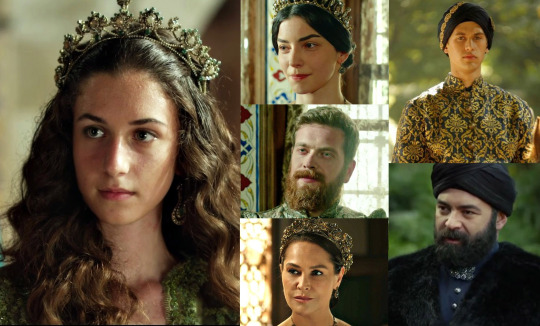
Fatma Sultan
Fatma Sultan was born in 1559 as the child of later Selim II and an anonymous concubine. Undoubtedly, Nurbanu was not her mother, as she was not in Selim's harem at Fatma's birth, and her will also reveal that Nurbanu was not her mother. Nurbanu had left Selim's province not long before when she accompanied Prince Murad to his province. Since 1546, Selim has paid special attention not to have more children, which is why the birth of Fatma is certainly due to an accident.
Fatma married Kaniyeli Siyavuş Pasa in 1574, who was the beylerbey of Rumelia and later became a Grand Vizier also. Their marriage was certainly happy, for she used all her influence to persuade her brother Murad to spare the pasha's life when he fell out of the sultan's favor. The pasha eventually survived Fatma as well. From their marriage four sons, Ahmed (1573 - 1582), Mustafa (1575 - 1599), Abdülkaadir (1577 - 1583), Süleyman (1579 - 1583?), and a girl were born.
Fatma died in 1580 after the birth of her daughter. The child also died shortly after birth, as he was a premature baby. Fatma still had time to make a will. From this, we know that her mother was not Nurbanu, for Fatma left her mother with a daily salary of 40 aspers. Thus, although the name of Fatma's mother remains an eternal mystery, we know that she survived her daughter and Selim II as well. She was buried in her father’s mausoleum at Aya Sofya. She did a lot of charity during her life, just like her sisters. Among other things, she built a madrassa, an elementary-school in Edirnekapi, but she also distributed a lot of money after her father’s death to say prayers for his soul.

Used sources:P. Kayaalp - The Empress Nurbanu and Ottoman Politics in the Sixteenth Century - Building the Atik Valide; Y. Öztuna - Kanuni Sultan Süleyman; U. Dakic - The Sokollu family clan and the politics of vizireial households in the second half of the sixteens century; S. Faroqhi - The Ottoman Empire and the World around it; C. Imber - The Ottoman Empire 1300-1650; D. A. Howard - A history of the Ottoman Empire; L. Peirce - Empress of the East; L. Peirce - The imperial harem; Pinar Kayaalp-Aktan, The Atik Valide Mosque Complex: A testament of Nurbanu’s prestige, power and piety; Necdet Sakaoğlu - Bu Mülkün Kadın Sultanları; Ömer Düzbakar, Charitable Women And Their Pious Foundations In The Ottoman Empire: The Hospital of The Senior Mother, Nurbanu Valide Sultan
* * *
Gevherhan szultána
Gevherhan szultána legnagyobb valószínűséggel 1544-ben született az akkor még hercegi rangot viselő, leendő II. Szelim lányaként. Anyja feltehetőleg Szelim kedvenc ágyasa, Nurbanu volt, ám figyelmebe véve életútját nem vehetjük biztosra ezt. Gyermekkorát apja maniszai tartományában töltötte szülei, húgai és öccse társaságában. Életükben nagyobb változás történhetett 1558-ban, mikor Szulejmán szultán kinevezte öccsét, Muradot egy saját hercegi tartományba. Nem maradt ránk egyételmű bizonyíték, hogy testvérei Muraddal tartottak e, ám a tradíció szerint azok a lányok, akik Murad édestestvérei voltak, tehát Esmehan biztosan és talán Gevherhan is a fiatal herceggel tartottak.
Öccse tartományát, vagy apjáét - amennyiben nem Murad édestestvére volt - minden bizonnyal 1562-ben hagyta el másik két lány testvére, Şah és Esmehan társaságában, amikor Isztambulba mentek. Ekkor Szulejmán szultán úgy határozott, kiházasítja Szelim lányait. Gevherhan férje Piyale Pasha, admirális lett. Házasságuk tizenhat éve alatt két lányuk született, Ayşe Atike (1563 - ?), Fatma szultánák és egy fiuk, Mehmed. Házasságuk során olyan pletykák keltek szárnya, miszerint Gevherhan egyszer saját kezüleg szúrta le egyik rabszolgájukat, amikor meglátta, hogy férje megsimogatja a lány nyakát, amikor elhaladt mellette. Nem tudni, hogy igaz e a történet, azonban azt mindenképpen jól szemlélteti már a feltevés is, hogy egy szultánát semmiképp sem alázhatta meg, csalhatta meg a férje, úgy hogy ezt megússza.
Első férje 1578-as halála után 1579-ben újra kiházasították, ezúttal öccse, Murad választott számára férjet, Cerrah Mehmed Pasa személyében. Házasságuk kiegyensúlyozott volt, Gevherhan erőteljesen támogatta férje politikai pályafutását. Egyesek szerint már az is Gevherhan támogatásának volt köszönhető, hogy Mehmed Pasa volt az, aki 1580-ban körülmetélte Gevherhan unokaöccsét, a leendő III. Mehmedet. Akárhogyan is, az esemény nagyon közel hozta egymásoz a pasát, a herceget és Gevherhant. Hogy a körülmetélést megkoronázza, Gevherhan egy gyönyörű bosnyák rabszolgát ajándékozott Mehmednek, amint a herceg 1583-ban saját tartományt kapott. Ez a bosnyák rabszolga lett később Handan szultána, a leendő szultán I. Ahmed édesanyja.
Gevheran és Mehmed Pasa politikai pályájuk csúcsát akkor élték, mikor III. Mehmed 1598-ban kinevezte Cerrah Mehmed Pasát nagyevzírnek. Férje rangjának köszönhetően Gevherhan a legfelőss politikai körökbe kerülhetett és minden bizonnyal állandó jelleggel kapcsolatot tartott Handannal és fiával, Ahmeddel is. Ezutóbbit támasztja alá a tény, hogy Ahmed trónralépése után sem csappant meg Gevherhan és Cerrah Mehmed Pasa befolyása, sőt! A fiatal Ahmed mindenképp ki akarta fejezni háláját Gevherhan és Cerrah Mehmed irányába, amiért azok korábban igen fontos szerepet játszottak szülei összehozásában. Ahmed úgy vélte, hogy Gevherhan és férje nélkül ő maga sosem születhetett volna meg, ezért létezéért is nekik tartozik hálával. Sajnálatos módon Ahmednek nem volt alkalma Cerrah Mehmedet magjutalmazni, ugyanis a pasa 1604 január 9-én elhunyt. Azonban Gevherhan szultánát nagyon nagy tisztelettel kezelte, több ezer aranyat küldött neki, valamint egy prémmel díszített ruhát, mely olyan ritka volt, hogy Gevherhanon kívül csupán Handan és Safiye szultána kapott hasonlót a fiatal szultántól 1603 decemberében. 1604 februárjában Ahmed újra prémes selyem ruhát ajándékozott, ám ezúttal csak Gevherhan és Handan szultánák kaptak. Ahmed később egyik leányát is Gevherhannak nevezte el, minden bizonnyal nagy-nagynénje tiszteletére. Gevherhan fizetése Ahmed életében 350 asper volt naponta, ami különösen magas volt rangjához viszonyítva.
Élete során rengeteget jótékonykodott, többek között építtetett egy madrassát Cağaloğluban. Gevherhan hosszú életet élt, 1623-ban még minden bizonnyal életben volt, hiszen ekkor módosította utoljára a végrendeletét, mely módosítás szerint lányának férjét nevezte ki alapítványainak felügyelőjének, melyért cserébe 80 asperes napi fizetést garantált neki. Az, hogy nem lányát bízta meg arra utalhat, hogy Ayşe Atike talán már elhunyt, esetleg nem találta őt alkalmasnak a feladatra. Utóbbit valószínűsíti, hogy a végrendelet szerint Gevherhan gyermekekre is hagyott pénzt, így talán Ayşe Atike mellett más gyermeke is megérte a felnőtt kort, esetleg unokái lehettek.

Şah szultána
Şah szultána volt valószínűleg a leendő II. Szelim legidősebb gyermeke, első szülött lánya, aki 1544-ben születhetett. Régóta tartja magát az, hogy édesanyja Nurbanu szultána volt, azonban erre nincs semmiféle bizonyíték, sőt a másodlagos bizonyítékok inkább úgy sejtetik, hogy Şah nem Nurbanu lánya volt.
1562-ben életében nagy fordulat állt be, ugyanis nagyapja, Szulejmán szultán parancsára két másik lánytestvérével együtt férjhez ment. Számára a fő solymászt, Çakırcıbaşı Hasan Agát jelölték ki férjül, aki másik két testvérének férjeihez képest alacsony rangú volt. Ez a tény is arra utalhat, hogy Şah talán nem a leendő III. Murad édestestvére volt, ezáltal nem Nurbanu lánya. Később természetesen Hasan Aga is feljebb jutott a ranglétrán és vezír lett belőle. Valószínűleg nem született gyermek ebből a házasságból.
Hasan Agával tizenkét évig voltak házasok, 1574-es halála után maga választhatott férjet. Választása Zal Mahmud Pasára esett, akivel 1575-ben házasodtak össze és igazi szerelmi házasságban éltek. Szerelmük legandás és üdítő kivétel a politikai házasságok között. Legalább két gyermekük született, egy lány, aki a felnőttkort megérve férjhez ment Abdal Han-hoz; és egy fiuk Köse Husrev Pasa, aki befolyásos államférfi lett és a szafavidák elleni harcban hunyt végül el.
Şah és Zal Mahmud sajnálatos módon nem vehettek hosszan részt gyermekeik nevelésében, ugyanis 1577 őszén mindketten betegek lettek és a legenda szerint ugyanazon a napon ugyanabban a percben hagyta el őket az élet. A valóság azonban kevésbé költői, Şah november 3-án hunyt el, míg Zal Mahmud 12 nappal később. Mindkettejüket a közösen építtetett Zal Mahmud Pasa dzsámiban helyezték örök nyugalomra. Gyermekeiket minden bizonnyal Nurbanu Valide szultána nevelte saját 1583-as haláláig, utána pedig III. Murad szultán gondoskodott róluk.
Egy követ épp jelen volt, mikor Şah temetése zajlott és így írt az eseményről: "Ma déli 12 órakor láttam, ahogy eltemetik Mahmud Pasa feleségét, Szelim Szultán lányát. Igen egyszerű ceremónia volt, ám hatalmas tömeg gyűlt össze a koporsó mindkét oldalán. Szokollu Mehmed Pasa, a nagyvezír volt az első, majd Rumélia főbírója követte őt. Mögöttük Mustafa, Ahmed, Sinan pasák és Anatólia főbírója vonult, valamint Rumélia beglerbégje és a főjanicsár vezető. Mindnyájan feketébe öltözve ültek lovaikon és még a janicsárok is lecserélték szokásos fejfedőiket turbánra."

Esmehan szultána
Esmehan szultána 1545-ben született Nurbanu és a leendő II. Szelim lányaként. Nővéreivel, Gevherhannal és Şahhal ellentétben, Esmehan minden kétséget kizáróan Nurbanu lánya volt. Emiatt 1558-ban nagy valószínűséggel követte Nurbanut és Muradot annak hercegi tartományába és innen ment férjhez is 1562-ben.
Testvérei közül Esmehan kötött a legmagasabb rangú államférfival házasságot. Férje Szokollu Mehmed Pasa lett, Szulejmán szultán nagyvezíre, aki később Szelim uralkodása során, sőt még III. Murad uralkodása alatt is vezette a birodalmat. Legalább négy gyermeke született Szokollu Mehmed Pasától, három fiú, Sokollu Ahmed (1563? - 1566), Pir-Mehmed (1566? - 1567?), Sokolluzade İbrahim (1565 - 1622?) és egy lány Safiye (1563? - ?), aki a felnőttkort megérve megházasodott Lala Mustafa Pasa, nagyvezír fiához nőül menve.
Férje és saját rangja révén Esmehan a birodalom legbefolyásosabb szultánája volt éveken keresztül. Gazdagságban csupán nagynénje, Mihrimah szultána tudta lekörözni, befolyásban viszont szinte senki. Szokollu Mehmed Pasával több grandiózus építkezési projektet is támogattak, így például nevükhöz köthető a Szokollu Mehmed Pasa mecset komplexum és az Esmehan Szultána mecset komplexum. Esmehan személyisége igen drámai volt, melyet gyakran engedett megnyilvánulni. Így például ő szervezte unokaöccse, későbbi III. Mehmed körülmetélési szertartását, melynek része volt, hogy egy gyermeket egy felbérelt gyilkos próbál megölni, de megmenti egy nimfának öltözött fialat lány.
Drámai személysigét ismerve nem meglepő, hogy édesanyját is rendszeresen támogatta annak politikai ügyeiben. Így például kiemelt szerepe volt abban is, hogy a franciáktól sikerült visszaszerezniük egy néhány éve a tengeren elfogott hajó két török, női utasát. Emellett befolyása volt öccsére is, melyet édesanyjával közösen igyekeztek kihasználni. Nurbanu ugyanis nagyon nem jött ki Murad kedvencével, Safiyével és minden erejével azon volt, hogy Muradot más nők felé fordítsa. Esmehan ebben segítségére volt édesanyjának és végül ő volt az, aki sikerrel mutatott be két igen jó nevelésű, gyönyörű nőt Muradnak. Murad elfogadta az ajándékot és onnantól kezdve megszűnt monogám kapcsolata Safiyével.
1579-ben férjét, Szokollu Mehmedet meggyilkolták, ezzel alig 34 évesen megözvegyült. Az ifjú szultánának azonnal házaosdni támadt kedve és mindenáron fiatal, jóképű férjet akart, ami érthető volt, figyelembe véve a tényt, hogy Szokollu Mehmed 40 évvel volt nála idősebb. Elsőre a híresen jóképű Özdemiroğlu Osman Pasát nézte ki, a pasa azonban elutasította a házassági ajánlatot. Sokakban felmerült a kérdés, hogy miért utasítaná el bárki a birodalom legbefolyásosabb nőjét. A választ sosem fogjuk megtudni, ám a lehetséges opciók között szerepel az, hogy Özdemiroğlu Osman Pasa egyszerűen szerelmes volt első feleségébe és esze ágában sem volt elválni; megint mások úgy vélik, hogy Esmehan szultána külseje lehetett a frigy útjában. Esmehan azon kevés szultánák közé tartozik, akinek külleméről maradtak fenn feljegyzések. Akiknek volt szerencséjük találkozni vele, mind azt mondták, hogy Emehan alacsony és egyáltalán nem csinos vagy szép, azonban megjegyezték azt is, hogy intelligenciája és vidám személyisége mégis levette a lábáról a körülötte lévő embereket. Esmehan talán nagyanyjára, Hürrem szultánára üthetett, akiről szintén úgy tartották, hogy alacsony volt és nem klasszikus szépség.
A visszautasítás után azonban Esmehan végül talált egy fiatal férjet, Kalaylıkoz Ali Pasát, Buda kormányzóját. A házasság azonban nem tartott sokáig, mert 1585 augusztus 5-én Esmehan életet adott egy fiúgyermeknek, majd három nappal később belehalt a komplikációkba. A fiú, Mahmud egy hónappal élte túl édesanyját. Esmehant apja mauzóleumában helyezték örök nyugalomra az Aya Sofiában. Fiát, Mahmudot első férje, Szokollu Mehmed mauzóleumában temették el.

Fatma szultána
Fatma szultána 1559-ben született a későbbi II. Szelim és egy névtelen ágyas gyermekeként. Minden kétséget kizáróan nem Nurbanu gyermek volt, hiszen születésekor Nurbanu nem tartózkodott Szelim háremében, emellett végrendeletéből is kiderül, hogy nem Nurbanu az édesanyja. Nurbanu nem sokkal korábban elhagyta Szelim tartományát, hogy Murad herceggel annak tartományába utazzon. Szelim 1546 óta különös figyelmet fordított arra, hogy ne nemzzen több gyermeket, épp ezért Fatma születése minden bizonnyal egy véletlen balesetnek köszönhető.
Fatma szultána 1574-ben ment férjhez Kanijeli Siyavuş Pasához, aki Rumélia beglerbégje volt, majd később nagyvezír is lett. Házasságuk minden bizonnyal boldog volt, ugyanis minden befolyását bevetve győzte meg bátyját Muradot, hogy kímélje meg a pasa életét, amikor az kiesett a szultán köreiből. A pasa végül Fatmát is túlélte. Házasságukból négy fiú, Ahmed (1573 – 1582), Mustafa (1575 – 4.1599), Abdülkaadir (1577 – 1583), Süleyman (1579 - 1583?) és egy lány született.
Fatma 1580-ban halt meg lánya születése után. A gyermek szintén nemsokkal születése után elhunyt, hiszen koraszülött volt. Fatmának még volt ideje végrendelkezni. Innen tudjuk, hogy édesanyja nem Nurbanu volt, ugyanis Fatma 40 asperes napi fizetést hagyott édesanyjának. Így bár Fatma anyjának neve örök rejtély marad, de tudjuk, hogy lányát és Szelimet is túlélte. Apja mauzóleumában az Aya Sofyában temették el. Élete során sokat jótékonykodott testvéreihez hasonlóan. Többekközött létrehozott egy madrassát, egy iskolát Edirnekapiban, de nagyon sok pénzt osztott apja halála után is, hogy imákat mondjanak lelkéért.

Felhasznált források: P. Kayaalp - The Empress Nurbanu and Ottoman Politics in the Sixteenth Century - Building the Atik Valide; Y. Öztuna - Kanuni Sultan Süleyman; U. Dakic - The Sokollu family clan and the politics of vizireial households in the second half of the sixteens century; S. Faroqhi - The Ottoman Empire and the World around it; C. Imber - The Ottoman Empire 1300-1650; D. A. Howard - A history of the Ottoman Empire; L. Peirce - Empress of the East; L. Peirce - The imperial harem; Pinar Kayaalp-Aktan, The Atik Valide Mosque Complex: A testament of Nurbanu’s prestige, power and piety; Necdet Sakaoğlu - Bu Mülkün Kadın Sultanları; Ömer Düzbakar, Charitable Women And Their Pious Foundations In The Ottoman Empire: The Hospital of The Senior Mother, Nurbanu
#Nurbanu Sultan#nurbanu#Selim II#gevherhan sultan#gevherhan#şah#sah#esmehan#ismihan#fatma#zal mahmud#sokollu mehmed#safiye sultan#Haseki Hürrem Sultan#hürrem sultan
29 notes
·
View notes
Photo

Family of Yavuz Sultan Selim.
Hanim Sultan maybe ws the same as Hatice Sultan but there was a Şehzade Sultan who was surely alive during Süleyman I’s late reign between 1555 November and 1556 November, since she is mentioned in Old Palace regiter with a daily stipend of 200 apsers. The same register also mentions her daughter, Ayşe with a daily stipend of 100 aspers.
The same register mentions an Esmehan with the same 100 asprs stipend, so she probably was one of Süleyman’s neices, probably the daughter of Şah-i Huban.
#selim i#yavuz#yavuz selim#yavuz sultan selim#ayse hatun#ayşe hatun#ayşe hafsa#ayşe hafsa hatun#hafsa#hafsa hatun#hafsa sultan#ayşe hafsa sultan#hatice#hatice sultan#fatma#fatma sultan#beyhan#beyhan sultan#süleyman#suleiman#süleyman i#suleiman i#gevherhan sultan#gevherhan#Şah-i Huban#şah-i huban sultan#sah-i huban#sahihuban#hanim şehzade sultan#hanim sultan
32 notes
·
View notes
Text
Portrait of Selim II / II. Szelim portréja
Origin and early education
Selim was born in 1524 as the second son of Sultan Suleiman and his favorite concubine, Hürrem. Of the couple’s children, Selim, the only one whose exact date of birth is known, was born on May 24 in Istanbul. His childhood was relatively peaceful, growing up in a normal family atmosphere under the care of his mother, grandmother, and father. He was educated with his older brother Mehmed, but of course with his own teachers. His brother, Mehmed, accompanied him throughout his childhood, as a kind of a third parent. He was older than Selim with 3 years, which was enough to be a supporter of his younger brother in new situations.
Such a new situation was the circumcision ceremony in 1530, which, however, was a new event for Mehmed as well. They were joined at the circumcision by their older half-brother, Mustafa. So the 15-year-old Mustafa, 9-year-old Mehmed, and 6-year-old Selim went through the ceremony together. Selim was still quite young for this, especially considering the fact that circumcision meant introducing the princes into political life as well. The circumcision ceremony lasted for more than two weeks and when the time came, the princes joined their father in the audiences, thus becoming full-fledged heirs, who were introduced to the people. This may have been the most difficult for the six-year-old Selim, as he was only at the very beginning of his education, too young for such important situations.
However, in Selim’s childhood, everything came early, he had to grow up quickly. In 1537, at the age of just 13, his father took him on a campaign. Luckily, Mehmed was also present on the campaign - it was also his first campaign - so he could comfort his younger brother in the difficult situation. Although Selim was young, the fact that Suleiman took him suggests that the prince had excelled in his education and was serious enough to accompany the sultan. It must have been a great honor for the young prince to take part in the campaign.
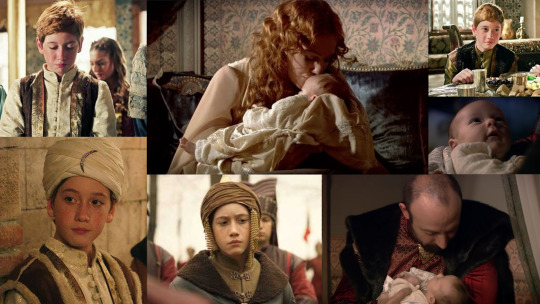
The young prince
Selim began his adult life in Konya in 1541. His mother did not accompany him, but his governess, who was very close to him, left with him to lead his harem. In November 1542, the judge of Manisa instructed one of his scribes to make an entry in the city’s official register, an “annal” that marked a significant date in the provincial capital’s history: “Sultan Mehmed son of Sultan Suleyman arrived in Manisa and acceded to the throne. Recorded on 3 Sha`ban 949 [12 November 1542]. In the same year Sultan Selim acceded to the throne in Karaman [at Konya].”
Hürrem did not stop to care about her son though and visited him regularly (first in 1543), accompanied by Prince Cihangir. He probably also met his favourite, Nurbanu in Konya, who may have been one of the concubines sent by his mother. It is not known that Nurbanu was the only sexual partner of Selim from the beginning, but it is certain that as early as the 1540s, the Venetian concubine was given a privileged role in the princely harem. Selim's first child, a girl - probably Şah - was born in Konya in 1544, and her mother may not have been Nurbanu. She was also followed in the same year by another daughter, Gevherhan.
1544 was a very busy year in Selim's life, for in addition to the birth of his children, his father invited him to Bursa for a family reunion. Here he could spend a few weeks with his mother, father, sister, and her husband. There was an official audience in Bursa also held by Sultan Suleiman, who during the audience appointed Selim to be the governor of Manisa due to the death of Prince Mehmed the previous year. Selim finally arrived in Manisa in August 1544. There in the summer of 1545, his third daughter, Esmehan, was born, whose mother was undoubtedly Nurbanu. Selim did not have to wait long for the heir either, in July 1546 Nurbanu gave birth to their first son, Murad. It was clear that Selim was not at all disappointed that his three daughters were born before Murad, for he could rejoice in the birth of the girls without any doubts, as a relatively secure future awaited them. However, Murad's birth was completely different ...
Selim was a sensitive and intelligent man who knew exactly what fate awaited for a prince in the dynasty. That is why with the birth of Murad, the relationship between Nurbanu and Selim changed. They no longer had the goal of procreation, for one son was enough to have an heir, but it was too much if we think about there was a good chance they would both end up with silk string around their necks. For Selim's half-brother, Mustafa had enormous support, it seemed very probable that after Suleiman's death he would ascend the throne and thus both Selim and his son would be executed. That is why Selim paid special attention to not produce other sons and, with the exception of one case, he did not have any other children after Murad's birth, until his accession to the throne.

A copy of his father?
Although Selim was one of Suleiman's children who, according to the accounts, most closely resembled Hürrem, his personality was similar to that of Suleiman. The blonde prince was an extremely calm, dutiful, and obedient man who, like his father, loved the arts, music, and poetry. The latter was suited to him so much that he himself acted as a poet. In these qualities, he resembled profoundly his father. This is why Suleiman was the closest to Selim beside Cihangir among his sons after the death of Prince Mehmed. However, in addition to these positive qualities, Selim also showed a tendency to depression, which intensified mainly at the twilight of his life.
Like his father, Selim needed very close human bonds. Reports suggesting that Selim was not close to his parents are the works of an ambassador who extremely hated Selim, which is why the reality content of these reports is quite questionable. According to the surviving pieces of evidence, even if Selim was not really close to his mother and sister, but he was to his younger brother Cihangir and his father. Selim also gave special attention to one of his governesses. Even when he ruled as a sultan, he spent a lot of time with his former governess, with whom they usually talked and played chess.
Selim gathered especially many intelligent women around himself, so that one of the most famous female poets of the 16th century, Ayşe Hubbi Hatun, who became a close friend of Prince Selim, and after the death of her husband in 1551, also came into his court. There was certainly no romantic relationship between the two, but a purely intellectual, friendly relationship that could develop between two art-loving, talented people. This is reinforced by the fact that Ayşe Hubbi Hatun remained close to the dynasty even after Selim's death and maintained a good relationship with both Selim's son and Nurbanu.
Yet Selim's greatest supporter was Nurbanu. She was the one who knew the prince best, who shared his worries as well as his joy. They were constantly together from 1541/2/3 to 1558, only to be separated if Selim accompanied his father on campaigns. There is not much evidence left of the nature of their relationship from these years, but knowing their later relationship, it is very likely that Nurbanu was not only a quiet companion to Selim but also a political adviser to him. Then in 1558, their son, Murad received his own province, and Nurbanu accompanied him. The relationship of Nurbanu and Selim may have been shaken by the fact that Selim soon got a concubine pregnant, who finally gave birth to a girl, Fatma, in 1559. However, the penitent Selim did not make other similar mistakes during the additional 8 years he spent separately from Nurbanu. His loyalty to Nurbanu is also a good indication of how much Selim resembled his father. He was the only one of his siblings to live in a mostly monogamous relationship and to show special respect for his partner.

Chances to the throne
Prince Mustafa's support was so great that, in fact, until 1553, it was certain that he would be the next sultan. Suleiman himself, after Mehmed's death, never showed any sign of intending to choose which of his sons he wants as a sultan. 1553 then brought tremendous changes in the life of the empire. In the summer of that year, Suleiman embarked on a campaign to which he invited Selim, Cihangir, and Prince Mustafa. Suleiman finally executed Prince Mustafa in October on charges of treason, which provoked unexpected resistance throughout the empire. Selim and Cihangir were the ones who could offer some consolation to the Sultan with their presence.
However, another tragedy soon befell the aging sultan. Prince Cihangir fell ill during the campaign, and his condition deteriorated rapidly, and eventually died in 1553 in November. Selim remained the only one who could support the sultan, although the loss of Cihangir certainly struck him as well. Through their similar nature, he was able to gauge well what his father needed. There is no exact evidence left of us about what happened between them during the campaign, but it is certain that the relationship between Suleiman and Selim was never as close as it was during and after the campaign. It seemed increasingly probable that Suleiman would name Selim his heir, but the sultan did not do it, he did not want to choose between his two remaining sons, Selim and Bayezid. Thus the two princes sought to gather supporters for themselves.
Prince Bayezid had strong supporters, like Rüstem Pasha, Hürrem Sultan, and Mihrimah Sultan, but statesmen and soldiers did not support the stubborn prince. Selim, on the other hand, was able to get the support of Sokollu Mehmed Pasa, who was rising higher and higher in office, and other less significant statesmen were on his side also. 1556 then brought another influential supporter for Selim - and took one away from Bayezid. Rüstem Pasha relocated Bayezid's teacher, Lala Mustafa, into Selim's province to spy. However, the teacher recognized that Selim was much more fit for the throne than Bayezid, so he turned against his former student and the Grand Vizier to be a supporter of Selim. Ambassadors who don’t like Selim often explain Mustafa Pasha’s side changing with his ambitions. They say Mustafa Pasha saw a greater chance of becoming the Grand Vizier on Selim’s side. This, of course, cannot be ruled out, but it is unrealistic to have betrayed a promising candidate for the sake of a less fit prince, so anyhow Selim really seemed a good choice for the throne, maybe better than Bayezid.
Fight for the throne
Hürrem Sultan died in 1558, which must have shaken Selim since she was his mother. However, for Bayezid, it was a much more turning point, as Bayezid lost his strongest supporter. Because of his reckless actions over and over again, Suleiman eventually decided to place both of his sons in a new province and send his oldest grandsons, Orhan and Murad to provinces as well. Thus Selim came to Kütahya and Bayezid to Amasya. Selim immediately obeyed and gathered to move, but Bayezid only set off after a long reluctance.
Exiled to Amasya, Bayezid constantly annoyed his father by his actions, and he eventually found himself in a hopeless situation and believed that there was no other way for him but open rebellion. He recruited an army to defeat and kill Selim and his son, Murad. This was the point where Suleiman openly appointed Selim as his heir and gave him all the support to defeat Bayezid. For the first time in his life, Selim could feel that he had a realistic chance of gaining the throne. This feeling was uplifting and consuming at the same time. It lifted him up, as it meant not only his own but his son’s survival also, but to achieve this he was forced to take the life of his own brother.
Selim, his son Murad, and Sokollu Mehmed confronted Bayezid on the Konya plane in May 1559. The battle lasted for two days, eventually, Selim emerged victoriously, but Bayezid was able to escape the battlefield so they could not calm down yet. Accompanied by Sokollu Mehmed, Prince Murad, and other Beylerbeys, Selim was after Bayezid, but Bayezid together with his sons successfully crossed the border and fled to Iran. This period was very difficult for everyone, for if the Iranian Shah decided to give an army to Bayezid, it would have been a huge problem for the Ottoman Empire. In the end, however, Tahmasp Shah did not want war, but sought a peaceful solution, being it is the best for his own country. That is why he began negotiations with the Sultan about Prince Bayezid.
Due to calmer circumstances, in December 1559, Suleiman finally sent Murad and Selim home. Although Selim was certainly happy to be able to hold his newborn baby daughter Fatma in his arms when he returned, but he did not have the support he needed, as Nurbanu and Murad were far from him. Perhaps this was when Selim first started to go down on the slope of depression. Precisely because of the knowledge of the circumstances, it is not possible to take seriously the account which characterizes Selim at this time as a lustful, fat man, who spent all his time with men and women in bed but so fat that he is unable to ride a horse. The prince was clearly not in a mood to eat and sex all day and he definitely was able to ride a horse as he had been chasing Bayezid for months on a horse. Unfortunately, these negative-sounding accounts have formed the basis opinion around Selim’s judgment for centuries, although nowadays it is already known that the ambassador who wrote them was not specifically sympathetic to Selim.

Waiting
Negotiations with Tahmasp Shah have taken a very long time. By July 1561, Suleiman had already offered 900,000 ducats, Selim supplemented this with 300,000, and they also promised the castle of Kars to the Shah, only to hand over Bayezid to Selim's men nearby. However, Tahmasp hoped for a long-term co-operation, which is why in March 1562 he sent his own ambassadors to Prince Selim with his offer. Tahmasp's aim was to supplement the promises made so far with a convention that would ensure that when Selim ascend the throne, the relationship between the two empires would remain peaceful. Selim accepted Tahmasp's offer, who in return handed over Bayezid and his sons. Returned to the territory of the empire Bayezid and his sons were executed by the Sultan's and Selim's men.
With the death of Bayezid and his sons, all obstacles were removed from the path of Selim and Murad. To further strengthen his son, Sultan Suleiman held a wedding in 1562, during which he married off Selim's three daughters: Esmehan to Sokollu Mehmed Pasha, Gevherhan to Piyale Pasha, and Şah to Hasan Aga. However, the wedding did not go as planned, for Mihrimah Sultan forbade and prevented all happy ceremonial movements in the harem, as she considered it inappropriate to celebrate shortly after Bayezid’s death. This event deeply saddened both the Sultan and Selim.
Selim sank deeper and deeper into self-pity in the following years as he waited for his father to die. Perhaps his alcoholism also began to be serious at this time. The prince was certainly not an alcoholic until the 1560s (it's even questionable that he ever became an alcoholic). It is true that he consumed alcohol, but he did so in moderation, as, for example, his father Suleiman did in his youth. However, as a result of the tragic events that took place in succession in the 1550s, he maybe began to lose scale. However, we still can't be sure that he ever became an alcoholic or we think it just thanks to the negative reports about him.
However, it cannot be said that Selim only dealt with himself in these dark times. As a single heir, he could essentially do whatever he wanted without having to fear the consequences. For example, even in Suleiman's life, he provided a regular monthly income to the mother of the deceased Prince Mustafa, Mahidevran Hatun, and even bought her a house to live in. This was a bold act because Suleiman himself ordered Mahidevran not to receive support from the imperial treasury. In addition, Selim later helped Mahidevran to build the tomb of Prince Mustafa.

His accession to the throne
In September 1566, Sultan Suleiman died during a campaign, and Selim immediately had to hurry to the scene to take the power. Indeed, Sokollu Mehmed Pasha kept the sultan's death in a secret until Selim arrived on September 29th. It is interesting that 46 years earlier, in 1520, Sultan Suleiman himself became a sultan at the end of September, almost the same day. This could have been a positive sign, but Selim's accession to the throne was far from as carefree as Suleiman's 46 years earlier.
The Janissaries did not support any of the princes after the death of Prince Mustafa, as they did not like enough Selim or Bayezid. And their voices were heard as soon as they returned to Istanbul. When they entered the capital, the Janissaries simply stopped and refused to proceed to the Topkapi Palace. In time, they got bored, so started going again a little, and soon they stopped again. Then Selim's son-in-law, Admiral Piyale Pasa, and the other vezirs of his ordered the Janissaries to proceed, but in response, they dragged the statesmen off their horses and eventually spared their life only in exchange for gold. Selim was in a very distressing situation, as the Janissaries publicly humiliated him and he could do nothing about it. The Janissaries finally announced what would change their minds and indicated that they wanted their ascension fee immediately. This fee was traditionally given by the sultan later, as Selim did not yet have access to the treasury because he could not yet return to the palace. The Janissaries, of course, knew this and deliberately wanted to humiliate the Sultan in this way. Selim eventually cut himself out of the situation by asking his sister, Mihrimah, for financial help.
With the help of Mihrimah, Selim was finally able to occupy the throne and, in exchange for the money, treated his sister with great respect and left her as the head of the Old Palace harem. With this, Mihrimah Sultan became the first woman to perform the duties of the valide sultan without being the mother of the sultan. The situation of the two siblings improved a lot during Selim's reign. Although the fact that Mihrimah openly supported Bayezid had been wedged between them in the past, but by then only they remained from the family, there was no one else they could count on, so they reconciled.
And Selim was finally able to be together Nurbanu again, whom he had moved to his mother's apartment in Topkapi Palace. He immediately made Nurbanu a Haseki Sultan, giving her more and more attention. Most of the ambassadors remarked on how much love and respect the Sultan had towards the woman and that he regarded her as his adviser. For this reason, it was not particularly surprising that in 1571 he married his favourite. However, the wedding was not just an expression of his love and respect...
After Selim's accession to the throne, he had only one heir, Murad, and his young child. That’s why the statesmen were constantly nagging the sultan to produce additional offsprings so they could avoid the end of the dynasty if Murad would die. Selim eventually gave up and after decades of monogamy, began to accept new concubines and produced to a total of six boys. His first three sons, Suleyman, Abdullah, and Mehmed, were born in the same week in 1571, while the other princes Ali, Osman, and Cihangir were born in or after 1573. The birth of the boys was positive for the dynasty, but it didn’t really affect Selim and Murad the same way. Of all the concubines who became pregnant by the Sultan, gave birth to sons, and no girl was born from these relationships. As the boys came into the world, it was clear that they would be executed soon. This fact pushed Selim even further into the depths of alcoholism and depression, but Murad did not bear it well either. For Murad grew up with no rivals, he never had to think about executing his brothers for the throne, and now he had the task ahead of him, for the future of his own child.
So Selim produced several sons, but he wanted to let everyone know that he had one heir, and that was none other than Murad. To this end, he repeatedly recognized him as his heir to the throne and also married his mother Nurbanu. The ambassadors noted that the wedding has largely happened in Murad’s interest. By the way, Nurbanu was paid more than twenty times as much as the mother of Selim's other sons. These concubines were not in any privileged position, their salaries were also relatively low, and their names did not survive. All we know about them is that two of them (mothers of Osman and Cihangir) had already died before Selim, and one of them (the mother of Suleyman) committed suicide after Selim’s death when his child was strangled at Murad’s command.

The sultan
In the first few years of Selim's reign, he cared about political affairs, though he did not really like it even then. A very interesting example of this was when in 1567 an envoy of Tahmasp was expected. Selim personally made all preparations for receiving the ambassador, even paying attention to how many ships would accompany him on the Bosphorus, how much sugar would be given to him. So he essentially paid attention to everything down to the smallest detail, but when he had to deal with the real reason for the envoy's arrival, to write the answer to the letter from Tahmasp Shah, Selim simply entrusted Piyale Pasa to write what he saw fit. Selim was in the fortunate position of being surrounded by very capable viziers, so in most cases, he simply left the government to them, while he was engaged in the arts, charity, and building.
However, there were times when he stood on his heels and made his own decision. Such was the case, for example, when he was openly confronted with his Grand Vizier, Sokollu Mehmed Pasha, on the issue of a campaign against Venice. The Grand Vizier would have supported peace, but Selim, intolerant of contradiction, ordered the start of the campaign. The campaign was otherwise successful and they occupied Cyprus which was under Venetian rule. Selim himself did not take part in the campaign, just as his successors did not really like to take part in the campaign. Nonetheless - and although most accuse Selim of not having enough action during his reign - he had to face several campaigns and rebellions during his reign. Not only because of his personality but also because of the financial situation of the empire, he sought peaceful solutions in most of these cases. Thus, it can be connected to him that the long war against the Kingdom of Hungary was also concluded with an eight-year peace agreement. He also successfully defeated the Arab uprising in Iraq and regained Yemen during a long and difficult campaign.
It is said that in his last years, his depression and alcoholism became more powerful, so he increasingly left everything to Sokollu Mehmed Pasha, while he himself spent his time in the harem, caring with building projects and doing the arts. Although he did not create his own building in the capital, in Edirne, Mimar Sinan established the Selimiye Mosque complex on Selim’s instructions. He also supported the renovation of Ayasofya. One of the wooden minarets in Ayasofya was badly damaged, so he replaced it with a brick one and erected two other minarets also. He also had two theological schools and a mausoleum built in Ayasofya.

Death
Selim died relatively suddenly, as a result of an accident in 1574. There are two theories about his death. According to one, he slipped in the harem and immediately lost his life when he hit his head. The other said he still survived the fall, but suffered such severe skull injuries that he died a few days later. The fact that Nurbanu successfully kept his death in a secret, makes the latter more likely. Either way, Selim died in 1574 and his body was preserved with ice until his son Murad secretly arrived in Istanbul.
At the time of his death, his mausoleum was not yet ready, so he was buried under a tent. He was the first sultan to die in Istanbul.
The judgment of Selim
Selim was forty-two years old when he became a sultan and ruled only for eight years. His relatively short reign has been widely criticized, even though he handled state affairs just like Suleiman, with a similar outcome. Suleiman himself left the direct administration of state affairs to his vezirs in the second half of his reign, just as Selim did. Still, people blame Selim for this, while they accept Suleyman to do it. The main difference between the reigns of the two sultans was that Selim did not take part in a single campaign as a sultan, while his father did. In addition, the fact that he consumed more and more wine and attended public Friday prayers less and less also did not help his judgment. However, it is important to note that Selim was neither the first nor the last sultan, who consumed alcohol or was an alcoholic. The earliest evidence of wine consumption comes from the time of Orhan Gazi, who in 1351 received thousands of gallons of wine as a gift from the Genoese, which he gladly consumed. Murad II and Suleiman I also regularly consumed alcohol in moderation. Selim, however, made the mistake of not doing so in secret. Nor was he the first to neglect Friday’s prayers, yet his case is regularly brought up against him. In addition, the third mistake Selim made was to give Sokollu much more power than any grand Vizier had ever exercised before. The common people and statesmen were not happy about Sokollu’s excessive influence, as this reduced their chances of gaining influence.
And it is also ridiculous that they accused Selim of not organizing campaigns. This is a mistake that posterity has glued on him completely wrong. The reason for the fewer campaigns was that with the death of Suleiman he took over a rather empty treasury, so he did not want to spend money irresponsibly on campaigns, but when it was possible he could try to choose a peaceful solution. With the peace treaty, he was able to swell the dilapidated treasury through tax payments. Nor is it true that the treasury was empty because of Selim. He had already inherited it in this way, but during Suleiman's reign, the deficit could be remedied from other sources and they could keep the financial situation in a secret. Nonetheless, in the terrible financial situation, Selim successfully regained territories such as Yemen or Tunis and acquired new ones such as Chios and Cyprus.
Overall, therefore, the reason for Selim's negative judgment was that the geopolitical and financial situation did not allow him to satisfy his people's need for conquest. Plus the fact that Selim had two brothers considered more suitable by the common people, yet he eventually ascended the throne made him less popular. Selim was not a bad sultan, simply such changes took place during his reign that did not please the people, such as the end of the era of conquests and the oppression of the Ottoman Empire as a monarch also due to the geopolitical situation.

Used sources: P. Kayaalp - The Empress Nurbanu and Ottoman Politics in the Sixteenth Century - Building the Atik Valide; Y. Öztuna - Kanuni Sultan Süleyman; U. Dakic - The Sokollu family clan and the politics of vizireial households in the second half of the sixteens century; S. Faroqhi - The Ottoman Empire and the World around it; C. Imber - The Ottoman Empire 1300-1650; D. A. Howard - A history of the Ottoman Empire; G. I. - Yermolenko - Roxolana in European Literature, History and Culture; L. Peirce - Empress of the East; L. Peirce - The imperial harem; Pinar Kayaalp-Aktan, The Atik Valide Mosque Complex: A testament of Nurbanu’s prestige, power and piety
* * *
Eredete és korai neveltetése
Szelim 1524-ben született Szulejmán szultán és kedvenc ágyasa, Hürrem második közös fiaként. A pár gyermekei közül Szelim az egyetlen, akinek születésének pontos ideje ismert, május 24-én jött világra Isztambulban. Gyermekkora viszonylag békés volt, normális családi légkörben nőtt fel édesanyja, nagyanyja és apja figyelő tekintete előtt. Taníttatását idősebb testvérével Mehmeddel összevonva végezte, de természetesen saját tanítókkal. Bátyja, Mehmed egész gyermekkorát végigkísérte, egyfajta harmadik szülőként. Épp annyival volt ugyanis idősebb Szelimnél, hogy az új helyzetekben már támogatni tudta öccsét, aki így minden bizonnyal felnézett Mehmedre.
Ilyen új helyzet volt az 1530-as körülmetélési szertartás is, mely azonban Mehmed számára is újkeletű esemény volt. A körülmetélésen csatlakozott hozzájuk idősebb féltestvérük, Musztafa is, így a 15 éves Musztafa, a 9 éves Mehmed és a 6 éves Szelim együtt estek át a szertartáson. Szelim meglehetősen fiatal volt még ehhez, különösen figyelembe véve a tényt, hogy a körülmetélés egyet jelentett a herceg bevezetésével a politikai életbe is. A körülmetélési ünnepség több, mint két hétig tartott és amikor eljött az idő, a hercegek csatlakoztak apjukhoz az audienciákon, ezzel pedig teljesértékű örökössé váltak, akit bemutattak a népnek. A hat éves Szelim számára lehetett ez a legnehezebb, hiszen még oktatásának legelején járt csupán, túl fiatal volt az ilyen nagy jelentőségű, komoly helyzetekhez.
Szelim gyermekkorában azonban minden korán jött el, gyorsan kellett felnőnie. 1537-ben, alig 13 évesen apja magával vitte őt hadjáratára. Szerencséjére Mehmed is jelen volt a hadjáraton - számára szintén ez volt az első -, így vigaszt nyújthatott a nehéz helyzetben öccse számára. Bár Szelim fiatal volt, a tény, hogy Szulejmán mégis magával vitte arra enged következtetni, hogy oktatásában kiemelkedően teljesített a herceg és elég komoly volt ahhoz, hogy elkísérhesse a szultánt. Minden bizonnyal a fiatal herceg számára hatalmas megtiszteltetés lehetett a hadjáraton való részvétel.

A fiatal herceg
Szelim felnőttéletét Konyában kezdte 1543-ban. Édesanyja nem tartott vele, azonban dajkája, aki igen közel állt hozzá vele tartott, hogy háremét irányítsa. Hürrem nem vette le kezét fiáról és rendszeresen meglátogatta őt Cihangir herceg kíséretében. Valószínűleg Konyában ismerte meg kedvencét, Nurbanut is, aki az anyja által küldött háremhölgyek egyike lehetett. Nem tudni, hogy a kezdetektől Nurbanu volt e Szelim egyetlen szexuális partnere, az azonban bizonyos, hogy már az 1540-es években kitüntetett szerep jutott a velencei ágyasnak a hercegi háremben. Szelim első gyermeke, egy lány - valószínűleg Şah - még Konyában jött világra, 1544-ben, neki nem biztos, hogy Nurbanu volt az édesanyja. Őt ugyanebben az évben szintén egy lány követte, Gevherhan.
1544 igen mozgalmas év volt Szelim életében, ugyanis gyermekei születése mellé, apja Bursába hívatta egy családi összejövetelre. Itt édesanyjával, apjával, nővérével és annak férjével tölthetett néhány hetet. Talán kisgyermekeit is magával vitte, hogy bemutassa őket a családnak. Az összejövetelen hivatalos audienciát is tartott Szulejmán szultán, aki Mehmed herceg előző évi halála miatt Szelimet nevezte ki Manisza tartomány élére. Szelim végül 1544 augusztusában érkezett meg Maniszába. Maniszában aztán 1545 nyarán megszületett harmadik lánya, Esmehan, akinek minden kétséget kizáróan Nurbanu volt az édesanyja. Szelimnek nem kellett sokat várni az örökösre sem, 1546 júliusában Nurbanu világra hozta első fiukat, Muradot. Azonban úgy tudni, Szelim egyáltalán nem volt csalódott attól, hogy három lánya is született Murad előtt, a lányok születésének ugyanis felhőtlenül tudott örülni, hiszen rájuk viszonylag biztos jövő várt. Murad születése azonban egész más volt...
Szelim érzékeny lelkű és intelligens férfi volt, aki pontosan tisztában volt azzal, hogy milyen sors vár egy hercegre a dinasztiában. Éppen ezért Murad születésével Nurbanu és Szelim kapcsolata megváltozott. Többé nem volt céljuk a gyermeknemzés, ugyanis egy fiú épp elég volt, hogy legyen örököse ám túl sok volt, ha arra gondolunk, hogy nagy esély volt arra, hogy mindketten selyemzsinórral a nyakukban végzik. Szelim féltestévre, Musztafa ugyanis hatalmas támogatottsággal bírt, igen valószínűnek tűnt, hogy Szulejmán halála után ő fogja elfoglalni a trónt és ezzel Szelimet és annak fiát is kivégző osztag fogja várni. Épp ezért Szelim különös figyelmet fordított a védekezésre és egyetlen esetet leszámítva nem nemzett mást gyermeket Murad születése után, egészen trónralépéséig.

Apja mása?
Bár Szulejmán gyermekei közül Szelim volt az, aki a beszámolók alapján leginkább hasonlított külsőleg Hürremre, személyisége Szulejmánéhez volt hasonlatos. A szőke herceg ugyanis rendkívül nyugodt, kötelességtudó és elhivatott férfi volt, aki apjához hasonlóan imádta a művészeteket, zenét, verseket. Utóbbit olyannyira, hogy maga is tevékenykedett költőként. Ezen tulajdonságaiban mélységesen hasonlított édesapjára, aki pont emiatt Mehmed herceg halála után Szelimhez állt a legközelebb. Szelimnél azonban ezen pozitív tulajdonságai mellett megjelent a depresszióra való hajlam is, mely főleg élete alkonyán erősödött meg.
Apjához hasonlóan Szelimnek is igen szoros emberi kapcsolatokra volt szüksége. Azok a beszámolók melyek arra utalnak, hogy Szelim nem állt közel szüleihez, egy Szelimet rendkívüli mértékben gyűlölő követ munkái, épp emiatt valóságtartalmuk meglehetősen kérdéses. A fennmaradt bizonyítékok szerint ha anyjához és nővéréhez nem is, de öccséhez Cihangirhoz és édesapjához valóban közel állt. A hercegi provinciában anyja helyét betöltő egyik dajkáját is kiemelt figyelemben részesítette Szelim. Még akkor is, mikor szultánként uralkodott, rengeteg időt töltött korábbi dajkájával, akivel általában beszélgettek és sakkoztak.
Szelim önmaga köré különösen sok intelligens nőt gyűjtött, így került udvartartásába a 16. század egyik leghíresebb költőnője, Ayşe Hubbi Hatun is, aki férje 1551-es halála után Szelim herceg közeli barátja lett. Kettejük között minden bizonnyal nem romantikus kapcsolat volt, hanem pusztán intellektuális, baráti viszony, ami két művészetet kedvelő, tehetséges ember között kialakulhat. Ezt erősíti az a tény is, hogy Ayşe Hubbi Hatun Szelim halála után is a dinasztia közelében maradt és mind Szelim fiával, mind Nurbanuval jó viszonyt ápolt.
Szelim legnagyobb támogatója mégis Nurbanu volt. Ő volt az aki a legjobban ismerte a herceget, aki osztozott aggodalmaiban éppúgy, mint az örömében. 1543-tól 1558-ig állandóan együtt voltak, csak akkor szakadtak el egymástól, ha Szelim édesapját kísérte hadjáratokra. Nem sok bizonyíték maradt hátra kapcsolatuk milyenségéről ezekből az évekből, ám a későbbi viszony ismeretében nagyon valószínű, hogy Nurbanu nem csak csendes társa volt Szelimnek, hanem politikai téren is tanácsadója volt a férfinak. 1558-ban aztán fiuk Murad megkapta saját tartományát, Nurbanu pedig vele tartott. Kapcsolatukat talán megingatta a tény, hogy Szelim hamarosan teherbe ejtett egy ágyast, aki végül 1559-ben egy lánynak, Fatmának adott életet. Azonban a bűnbánó Szelim nem követett el több hasonló hibát a további külön töltött 8 év során. Nurbanuhoz való hűsége is jól mutatja, hogy Szelim mennyire hasonlított édesapjára. Testvérei közül ő volt az egyetlen aki többé kevébé monogám kapcsolatban élt és kiemelt tiszteletet mutatott párja iránt.

Esélyek a trónra
Musztafa herceg támogatottsága olyan hatalmas volt, hogy tulajdonképpen 1553-ig biztos volt, hogy ő lesz a következő szultán. Szulejmán maga pedig Mehmed halála után sosem mutatta jelét, hogy választani szándékozna fiai közül. 1553 aztán hatalmas változásokat hozott a birodalom életében. Az év nyarán Szulejmán hadjáratra indult, ahová magával hívta Szelimet, Cihangirt és Musztafa herceget is magához rendelte. Szulejmán végül októberben árulás vádjával kivégeztette Musztafa herceget, ami nem várt méretű ellenállást váltott ki birodalomszerte. Szelim és Cihangir voltak azok, akik valamelyest vigaszt tudtak nyújtani a szultánnak jelenlétükkel.
Azonban hamarosan újabb tragédia érte az idősödő szultánt. Cihangir herceg a hadjárat során megbetegedett, állapota pedig rohamosan romlott és végül 1553 novebmerében elhunyt. Szelim maradt az egyetlen aki támogatni tudta a szultánt, bár Cihangir elvesztése minden bizonnyal őt is lesújtotta. Hasonló természete révén jól tudta felmérni, hogy apjának mire van szüksége. Pontos bizonyítékok nem maradtak ránk arról, hogy mi történt köztük a hadjárat során, az azonban bizonyos, hogy Szulejmán és Szelim kapcsolata sosem volt még olyan szoros, mint a hadjárat után. Egyre valószínűbbnek tűnt, hogy Szulejmán Szelimet fogja megnevezni örököséül, a szultán azonban nem lépte ezt meg, nem akart választani megmaradt két fia Szelim és Bayezid közül. Így a két herceg igyekezett maga mellé támogatókat gyűjteni.
Bayezid hercegnek erős támogatói voltak, Rüsztem Pasa, Hürrem szultána és Mihrimah szultána személyében, ám az államférfiak és katonák nem pártolták az önfejű herceget. Szelim ellenben magáénak tudhatta az egyre magasabbra törő Szokollu Mehmed Pasa támogatását és más kevésbé jelentős államférfiak is az ő oldalán álltak. 1556 aztán egy újabb befolyásos támogatót hozott Szelim számára - és vett el Bayezidtől. Rüsztem Pasa ugyanis áthelyeztette Bayezid tanítóját, Lala Musztafát Szelim tartományában, hogy kémkedjen. A tanító azonban felismerte, hogy Szelim sokkal alkalmasabb a trónra, mint Bayezid, így szembe fordult korábbi tanulójával és a nagyvezírrel is, hogy Szelim támogatója lehessen. A Szelimet nem kedvelő követek gyakran Musztafa Pasa ambícióival magyarázzák az oldalváltást, miszerint Szelim oldalán nagyobb esélyt látott a nagyvezíri pozícióra. Ezt természetesen nem zárhatjuk ki, ám életszerűtlen, hogy elárult volna egy ígéretes jelöltet egy kevésbé alkalmas herceg kedvéért.
Harc a trónért
1558-ban elhunyt Hürrem szultána, ami minden bizonnyal megrázta Szelimet, hiszen édesanyjáról volt szó. Azonban Bayezid számára sokkal inkább sorsfordító esemény volt ez, hiszen Bayezid elvesztette legerősebb támogatóját. Újabb és újabb meggondolatlan cselekedetei miatt végül Szulejmán úgy döntött, mind a két fiát új tartományba helyezteti és unokáit is tartományokba küldi. Így került Szelim Kütahyába, Bayezid pedig Amasyába. Szelim haladéktalanul engedelmeskedett a parancsnak és összeszedelőzködött a költözéshez, Bayezid azonban csak hosszas vonakodás után indult el.
Bayezid Amasyába száműzve, apját cselekdeteivel folyamatosan bosszantva végül kilátástalan helyzetbe került és úgy hitte, nincs előtte más út, csak a nyílt lázadás. Hadsereget toborzott, hogy legyőzze és megölje Szelimet és annak fiát, Muradot. Ez volt az a pont, ahol Szulejmán nyíltan kinevezte Szelimet örököséül és minden támogatást megadott neki, hogy legyőzze Bayezidet. Szelim életében először érezhette azt, hogy reális esélye van a trón megszerzésére. Ez az érzés egyszerre volt felemelő és elemésztő. Felemelte, hiszen nem csak saját, de fia életben maradását is jelentette, azonban ennek eléréséhez kénytelen volt saját öccsének életét venni.
Szelim Szokollu Mehmed és fia Murad csapatainak vezetőjeként szállt szembe Bayeziddel a konyai síkon 1559 májusában. A csata két napig tartott, végül Szelim került ki győztesként, azonban Bayezid el tudott menekülni a csatatérről, így még nem nyugodhattak meg. Szokollu Mehmed, Murad herceg és további beglerbégek kíséretében Szelim Bayezid sarkában volt, ám a herceg fiaival együtt sikeresen átlépte a határt és Iránba menekült. Ez az időszak igen nehéz volt mindenki számára, hiszen ha az iráni şah úgy dönt, hogy sereget ad Bayezidnak, az hatalmas probléma lett volna az Oszmán Birodalom számára. Végül azonban Tahmasp şah nem akart háborút, hanem békés megoldást keresett, ez lévén a legjobb saját országának. Épp ezért tárgyalásokba kezdett a szultánnal Bayezid hercegről.
A nyugodtabbá váló körülmények miatt, 1559 decemberében végül Szulejmán hazaengedte Muradot és Szelimet. Szelimet bár bizonyosan jól érintette, hogy visszatérve karjában tarthatta újszülött kislányát Fatmát, nem volt meg mellette az a támogatás, amelyre szüksége lett volna, Nurbanu és Murad ugyanis távol voltak tőle. Talán ekkor indult meg először Szelim a depresszió lejtőjén. Épp a körülmények ismerete miatt nem lehet komolyan venni azt a beszámolót, ami ekkor Szelimet viháncoló, kövér kéjencként jellemzi, aki férfiakkal és nőkkel is enyeleg ám olyan kövér, hogy képtelen lóra ülni. A herceg egyértelműen nem volt viháncolós kedvében és lovon is képes volt ülni, hiszen így üldözte Bayezidet hónapokon keresztül. Sajnálatos módon ezek a negatív hangvételű követi beszámolók képezték évszázadokon keresztül az alapot Szelim megítélése körül, pedig napjainkban már tudott, hogy a követ aki ezeket írta kifejezetten nem szimpatizált Szelimmel.

Várakozás
A Tahmasp şahhal való tárgyalások igen hosszúra nyúltak. 1561 júliusára Szulejmán már 900 000 dukátot ajánlott, Szelim ezt kiegészítette 300 000-rel, emellett odaígérték Kars várát is a şah-nak, csak hogy átadja Bayezidet Szelim közelben táborozó embereinek. Tahmasp azonban hosszútávú eredményes együttműködést remélt, emiatt 1562 márciusában saját követeit küldte el Szelim herceghez ajánlatával. Tahmasp célja az volt, hogy az addigi ígéreteket kiegészíthesse egy egyezménnyel, ami biztosítaná, hogy mikor Szelim elfoglalja a trónt, a két birodalom viszonya továbbra is békés lenne. Szelim elfogadta Tahmasp ajánlatát, aki cserébe átadta Bayezidet és fiait, hogy aztán a birodalom területére visszatérve kivégezzék őket.
Bayezid és fiainak halálával Szelim és Murad útjából minden akadály elhárult. Hogy tovább erősítse fiát, Szulejmán szultán mennyegzőt tartott 1562-ben, melynek keretein belül kiházasította Szelim három lányát: Esmehant Sokollu Mehmed Pasához, Gevherhant Piyale Pasához, Şah-t pedig Hasan Agához. Az esküvő azonban nem úgy sikerült, ahogy a szultán tervezte, Mihrimah szultána ugyanis megtiltott és megakadályozott minden ünnepi megmozdulást a háremben, hiszen illetlennek tartotta, hogy nemsokkal Bayezid halála után ünnepeljenek. Ezen esemény mélységesen elszomorította a szultánt és Szelimet is.
Szelim egyre mélyebbre süllyedt az önsajnálatba a következő években, amíg apja halálára várt. Talán alkoholizmusa is ekkor kezdett elhatalmasodni. A herceg ugyanis az 1560-as évekig egészen biztosan nem volt alkoholista (már ha később egyáltalán valóban az volt). Igaz, hogy fogyasztott alkoholt, azonban azt mértékkel tette, ahogy például apja Szulejmán is tette ifjú korában. Azonban a tragikus események hatására, melyek az 1550-es években sorra érték kezdte elveszíteni a mértéket. Azonban a mai napig nem lehetünk teljességgel bizonyosak abban, hogy Szelim ténylegesen alkoholista volt, vagy csupán a róla terjedő negatív vélemények miatt hisszük így a mai napig.
Azonban Szelimre nem lehet azt mondani, hogy csak magával foglalkozott volna ezekben a sötét időkben. Mint egyetlen örökös, lényegében már azt tehetett, amit csak akart, anélkül, hogy félnie kelljen a következményektől. Így például még Szulejmán életében rendszeres havi jövedelmet biztosított az elhunyt Musztafa herceg édesanyjának, Mahidevran Hatunnak, sőt egy házat is vásárolt neki, hogy abban éljen. Ez azért volt merész cselekedet, mert Szulejmán maga rendelte el, hogy Mahidevran ne kapjon támogatást a birodalmi kincstárból. Emellett Szelim később segítette Mahidevrant abban is, hogy felépíthesse Musztafa herceg türbéjét.

Trónralépése
1566 szeptemberében Szulejmán szultán egy hadjárat során elhunyt, Szelimnek pedig azonnal a helyszínre kellett sietnie, hogy átvegye a hatalmat. Szokollu Mehmed Pasa ugyanis titokban tartotta a szultán halálát egészen addig, amíg Szelim nem érkezett meg szeptember 29-én. Érdekesség, hogy 46 évvel korábban 1520-ban Szulejmán szultán maga is szeptember végén, szinte napra pontosan ekkor lett szultán. Ez lehetett volna egy pozitív előjel is, ám Szelim trónralépése távolról sem volt olyan gondtalan, mint Szulejmáné 46 évvel korábban.
A janicsárok Musztafa herceg halála után nem álltak egyik herceg pártjára sem, hiszen sem Szelimet, sem Bayezidet nem kedvelték. Véleményüknek pedig hangot adtak, amint visszatértek Isztambulba. Ekkor ugyanis a város határát átlépve a janicsárok egyszerűen megálltak és elutasították, hogy tovább haladjanak a palota felé. Idővel megunták, kicsit újra elindultak majd hamarosan ismételten lecövekeltek. Ekkor Szelim veje, a tengernagy Piyale Pasa és többi vezíre is parancsot adott a janicsároknak a tovább indulásra, akik válaszul lerántották lovaikról az államférfiakat és végül csak pénzért cserébe kímélték meg őket. Szelim nagyon szorult helyzetbe került, hiszen a janicsárok nyilvánosan alázták őt meg, és nem tehetett semmit ellene. A janicsárok végre közölték, hogy mi változtatná meg véleményüket és jelezték, hogy a trónralépési jussukat akarják azonnal. Ezt a jusst a szultán a hagyományok szerint később osztja ki, hiszen Szelimnek még nem volt hozzáférése a kincstárhoz, mert még nem tudott visszajutni a palotába. A janicsárok természetesen ezt tudták és szándékosan akarták így megalázni a szultánt. Szelim végül kivágta magát a helyzetből azzal, hogy nővérétől, Mihrimahtól kért anyagi segítséget.
Mihrimah segítségével végül Szelim elfoglalhatta a trónt, és a pénzért cserébe hatalmas tisztelettel kezelte nővérét és meghagyta őt a Régi Palota háremének fejeként. Ezzel Mihrimah szultána lett az első olyan nő, aki a valide szultána feladatait végezhette úgy, hogy nem volt a szultán anyja. A két testvér helyzete Szelim uralkodása alatt sokat javult. Bár korábban éket vert közéjük a tény, hogy Mihrimah nyíltan Bayezidet támogatta, addigra csak ők maradtak a családból, nem volt senki más akire számíthattak volna, így kibékültek.
Szelim pedig végre újra maga mellett tudhatta Nurbanut is, akit édesanyja lakrészébe költöztetett a Topkapi Palotában. Azonnal megtette Nurbanut Haszeki szultánává, ezzel pedig egyre több figyelem szegeződött az asszonyra. A legtöbb követ megjegyezte, hogy mekkora szeretettel és tisztelettel viszonyul a szultán a nő irányába, valamint, hogy tanácsadójaként tekinti őt. Emiatt nem is volt különösebben meglepő, hogy 1571-ben feleségül vette kedvencét. Az esküvő azonban nem csak a szeretete és tisztelete kifejezéseként szolgált.
Szelimnek trónralépése után ugyanis egyetlen örököse volt, Murad és annak kisgyermek fia. Az államférfiak épp ezért állandóan azzal nyaggatták a szultánt, hogy nemzzen további utódokat, hogy elkerülhessék a dinasztia végét, ha Murad elhunyna. Szelim végül engedett unszolásuknak és több évtizednyi monogámia után újabb ágyasokat kezdett fogadni és összesen hat fiút nemzett. Első három fia, Süleyman, Abdullah és Mehmed ugyanazon a héten születtek 1571-ben, Ali, Osman és Cihangir hercegek pedig 1573 után születtek. A fiúk születése a dinasztia szempontjából pozitív volt, azonban Szelimre és Muradra nem igazán így hatott. Az összes ágyas akik teherbe estek a szultántól fiút szültek, egyetlen lány sem született ezekből a kapcsolatokból. A fiúk pedig úgy jöttek világra, hogy egyértelmű volt, hamarosan ki lesznek végeztetve. Ez a tény Szelimet még tovább lökte az alkoholizmus és depresszió mélységeibe, de Murad sem viselte jól. Murad ugyanis úgy nőtt fel, hogy nem voltak riválisai, egyáltalán sosem kellett azon gondolkodnia, hogy ki kellene végeztesse testvéreit, most pedig előtte állt ez a feladat is, saját gyermeke jövőjének érdekében.
Szelim tehát több fiút is nemzett, ám mindenképpen tudatni akarta mindenkivel, hogy egyetlen örököse van, az pedig nem más, mint Murad. Ennek érdekében többszöt is elismerte a fiút, mint trónörököst, valamint feleségül vette édesanyját Nurbanut. Legalábbis a követek úgy jegyzik, hogy az esküvő legnagyobb mértékben Murad érdekéből jött létre. Nurbanu egyébként több, mint húszszor akkora fizetéssel rendelkezett, mint Szelim többi fiának anyja. Ezek az ágyasok semmilyen kiváltságos helyzetben nem voltak, fizetésük is viszonylag alacsony volt, nevük sem maradt fenn. Annyit tudunk róluk, hogy ketten (Oszmán és Cihnagir anyjai) közülük már Szelim előtt elhunytak, egyikük (Szulejmán anyja) pedig Szelim halála után lett öngyilkos, mikor Murad parancsára gyermekét megfojtották.

A szultán
Szelim uralkodásának első néhány évében még törődött a politikai ügyekkel, igaz már ekkor sem igazán kedvelte őket. Ennek nagyon érdekes példája, amikor 1567-ben Tahmasp şah követét várták. Szelim személyesen intézett minden előkészületet a követ fogadására, még arra is figyelmet fordított, hogy hány hajó kísérje őt a Boszporuszon, hogy mennyi cukrot adjanak neki. Lényegében tehát a legapróbb részletekig odafigyelt mindenre, azonban amikor a követ jövetelének valódi okával kellett volna foglalkozni, megírni a választ a követ által hozott levélre, Szelim egyszerűen rábízta Piyale Pasára, hogy írja meg amit jónak lát. Szelim abban a szerencsés helyzetben volt, hogy igen alkalmas vezírek vették körül, így a legtöbb esetben egyszerűen rájuk hagyta a kormányzást, míg ő a művészetekkel, jótékonykodással foglalkozott.
Előfordultak azonban olyan esetek is, mikor a sarkára állt és maga döntött. Ilyen volt például, mikor nyíltan szembe került a nagyvezírével, Szokollu Mehmed Pasával egy Velence elleni hadjárat kérdésében. A nagyvezír a békét támogatta volna, Szelim azonban ellentmondást nem tűrve a hadjárat megindítását rendelte el. A hadjárat egyébként sikeres volt és elfoglalták a velencei fennhatóság alatt álló Ciprust. Szelim maga nem vett részt a hadjáratban, mint ahogy utódai sem igazán kedvelték a hadjáratokon való részvételt. Ettől függetlenül - és bár a legtöbben azzal vádolják Szelimet, hogy uralkodása alatt nem volt elég akció - uralkodása alatt több hadjárattal és lázadással is szembe kellett néznie. Nem csak személyisége miatt, hanem a birodalom anyagi helyzete miatt is törekedett a békés megoldásokra ezekben az esetekben. Így nevéhez köthető, hogy a hosszú Magyar Királyság ellen zajló háborút is sikerült lezárni egy nyolc éves békemegállapodással. Emellett sikeresen verte le az arabok lázadását Irakban és szerezte vissza Yement egy hosszú és nehéz hadjárat során.
Utolsó éveiben depressziója és alkoholizmusa elhatalmasodott, így egyre inkább Szokollu Mehmed Pasára hagyott mindent, ő maga pedig a háremben töltötte idejét, építkezett, művészetekkel foglalkozott. Bár a fővárosban nem hozott létre saját épületet, Edirnében Mimar Sinan létrehozta a Selimiye mecset komplexumot Szelim utasítására. Emellett az Ayasofya felújítását is támogatta. Az Ayasofya egyik fa-minaretje ugyanis erősen megrongálódott, ezért ezt téglára cseréltette és két másik minaretet is felhúzatott. Szintén az Ayasofyában két teológiai iskolát és egy mauzóleumot építtetett.

Halála
Szelim viszonylag hirtelen halt meg, egy baleset következtében 1574-ben. Két teória létezik halálával kapcsolatban. Az egyik szerint elcsúszott a háremben és fejét beütve azonnal életét vesztette. A másik szerint az esést még túlélte, viszont olyan súlyos koponya sérüléseket szenvedett, hogy néhány nappal később elhunyt. A tény, hogy halálát Nurbanu sikeresen tartotta titokban inkább az utóbbi eshetőséget valószínűsíti. Akárhogyan is Szelim 1574-ben elhunyt, testét pedig jéggel tartósították, amíg fia Murad titokban Isztambulba érkezett.
Halálakor mauzóleuma még nem volt kész, így egy sátor alatt temették el. Ő volt az első szultán, aki Isztambulban halt meg.
Megítélése
Szelim negyvenkét éves volt, amikor szultán lett és nyolc évig uralkodott. Relatíve rövid uralkodását igen sok kritika éri, holott az államügyek kezelését éppen úgy végezte, mint Szulejmán, hasonló kimenetellel. Ugyanis maga Szulejmán is az államügyek direkt intézését vezíreire hagyta uralkodásának második felében, épp úgy, mint Szelim. A fő különbség a két szultán uralkodása között az volt, hogy Szelim szultánként egyetlen egyszer sem vett részt hadjáraton, míg apja igen. Emellett a tény, hogy egyre több bort fogyasztott, valamint egyre ritkábban látogatta nyilvánosan a pénteki imákat szintén nem segítették megítélését. Ugyanakkor fontos leszögezni, hogy Szelim nem az első és nem is az utolsó szultán volt, aki alkoholt fogyasztott vagy alkoholista volt. A legkorábbi bizonyíték a borfogyasztásra Orhan Gazi korából származik, aki 1351-ben több ezer gallon bort kapott ajándékba a genovaiaktól, melyeket örömmel fogyasztott. II. Murad és I. Szulejmán szintén rendszeresen fogyasztottak mértékletesen alkoholt. Szelim azonban elkövette azt a hibát, hogy ezt nem titokban tette. A pénteki imák elhanyagolásában sem ő volt az első, mégis esetében rendszeresen felhozzák ellene. Emellett a harmadik hiba amit elkövetett Szelim, az volt, hogy sokkal nagyobb hatalmat adott Sokollu kezébe, mint amit korábban bármelyik nagyvezír valaha is gyakorolt. A köznép és az államférfiak nem örültek Szokollu túlzó befolyásának, hiszen ez csökkentette az ő esélyeiket a befolyás megszerzésére.
Az pedig, hogy Szelimet azzal vádolják, hogy nem szervezett hadjáratokat, nem igaz. Ez olyan tévedés, melyet az utókor ragasztott rá teljesen tévesen. A kevesebb hadjárat oka az volt, hogy Szulejmán halálával egy igencsak üres kincstárat vett át, így nem akart felelőtlenül hadjáratokra költeni pénzt, hanem amikor lehetett igyekezett a békés megoldást választani. A békekötéssel ugyanis adóbefizetéseken keresztül duzzasztani tudta a megcsappant kincstárat. Az sem igaz, hogy Szelim miatt volt üres a kincstár. Ő már így örökölte meg, Szulejmán uralkodása alatt azonban a hiányt még más forrásokból lehetett orvosolni, ezzel pedig titokban tartani. Ettől függetlenül mégis sikeresen szerzett vissza területeket, mint Yemen vagy Tunisz és szerzett újakat, mint Chios és Ciprus.
Összességében tehát Szelim negatív megítélésénének oka az, hogy a geopolitikai és pénzügiy helyzet nem tette lehetővé, hogy kielégítse népe hódítási-igényét, valamint az a tény, hogy Szelimnek két a köznép által alkalmasabbnak tartott bátyja is volt, mégis ő került végül a trónra. Szelim nem volt rossz szultán, egyszerűen csak uralkodása alatt történtek olyan változások, melyek a népnek nem voltak ínyére, ilyen volt például, hogy a hódítások kora befellegzett és az Oszmán Birodalom, mint egyeduralkodó szintén vissza szorult a geopolitikai helyzet miatt.

Felhasznált források: P. Kayaalp - The Empress Nurbanu and Ottoman Politics in the Sixteenth Century - Building the Atik Valide; Y. Öztuna - Kanuni Sultan Süleyman; U. Dakic - The Sokollu family clan and the politics of vizireial households in the second half of the sixteens century; S. Faroqhi - The Ottoman Empire and the World around it; C. Imber - The Ottoman Empire 1300-1650; D. A. Howard - A history of the Ottoman Empire; G. I. - Yermolenko - Roxolana in European Literature, History and Culture; L. Peirce - Empress of the East; L. Peirce - The imperial harem; Pinar Kayaalp-Aktan, The Atik Valide Mosque Complex: A testament of Nurbanu’s prestige, power and piety
#Suleiman the Magnificent#Suleiman I#Suleyman I#sehzade selim#Selim II#Murad III#Nurbanu Sultan#haseki nurbanu sultan#Haseki Hürrem Sultan#Mihrimah Sultan#sokollu mehmed#Sehzade Cihangir#Sehzade mehmed#sehzade bayezid#sehzade mustafa#mahidevran hatun
60 notes
·
View notes